- By Design Bundles
- 8 Mins
- Photoshop Tutorials
Realistic Notebook in Photoshop
1 - In Photoshop, open the image you chose as “Background”.

2 - Use the “Rounded Rectangle Tool” (U), to create a “Rectangular” shape. Fill it with White.
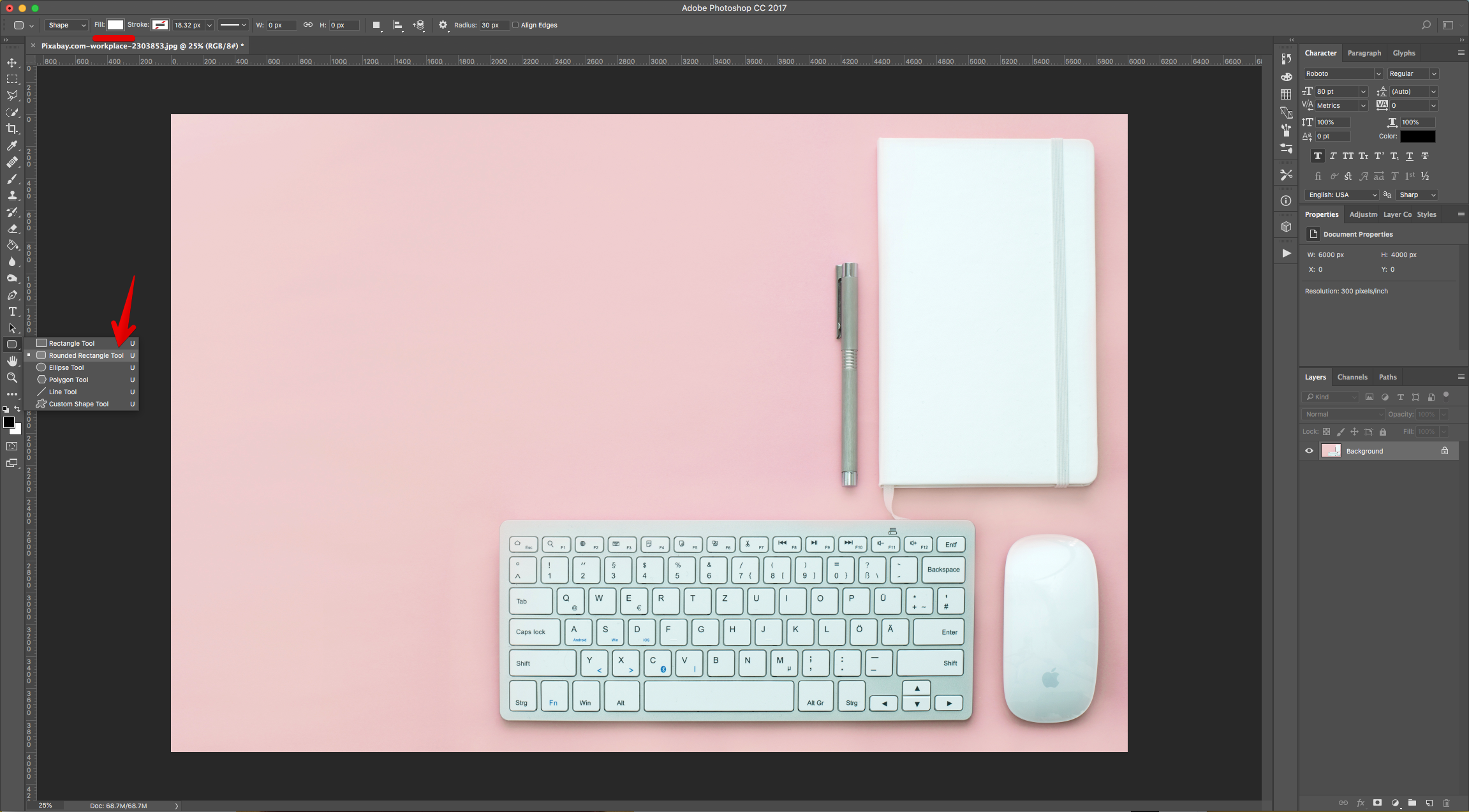

3 - Double-click on top of its Thumbnail and apply the following “Layer Styles”:
Drop Shadow:
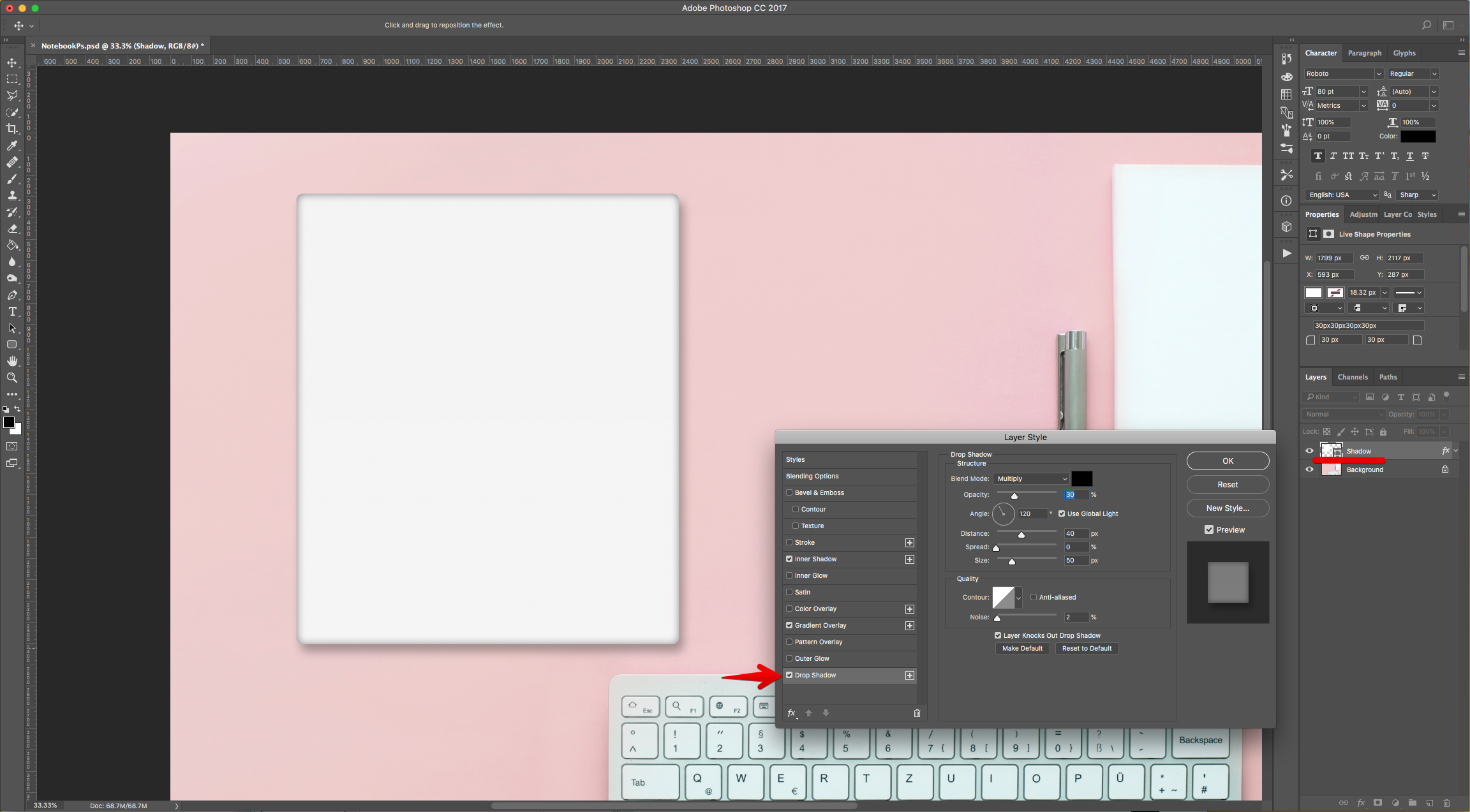
Gradient Overlay: (from #d6d6d6 to #dbdbdb)
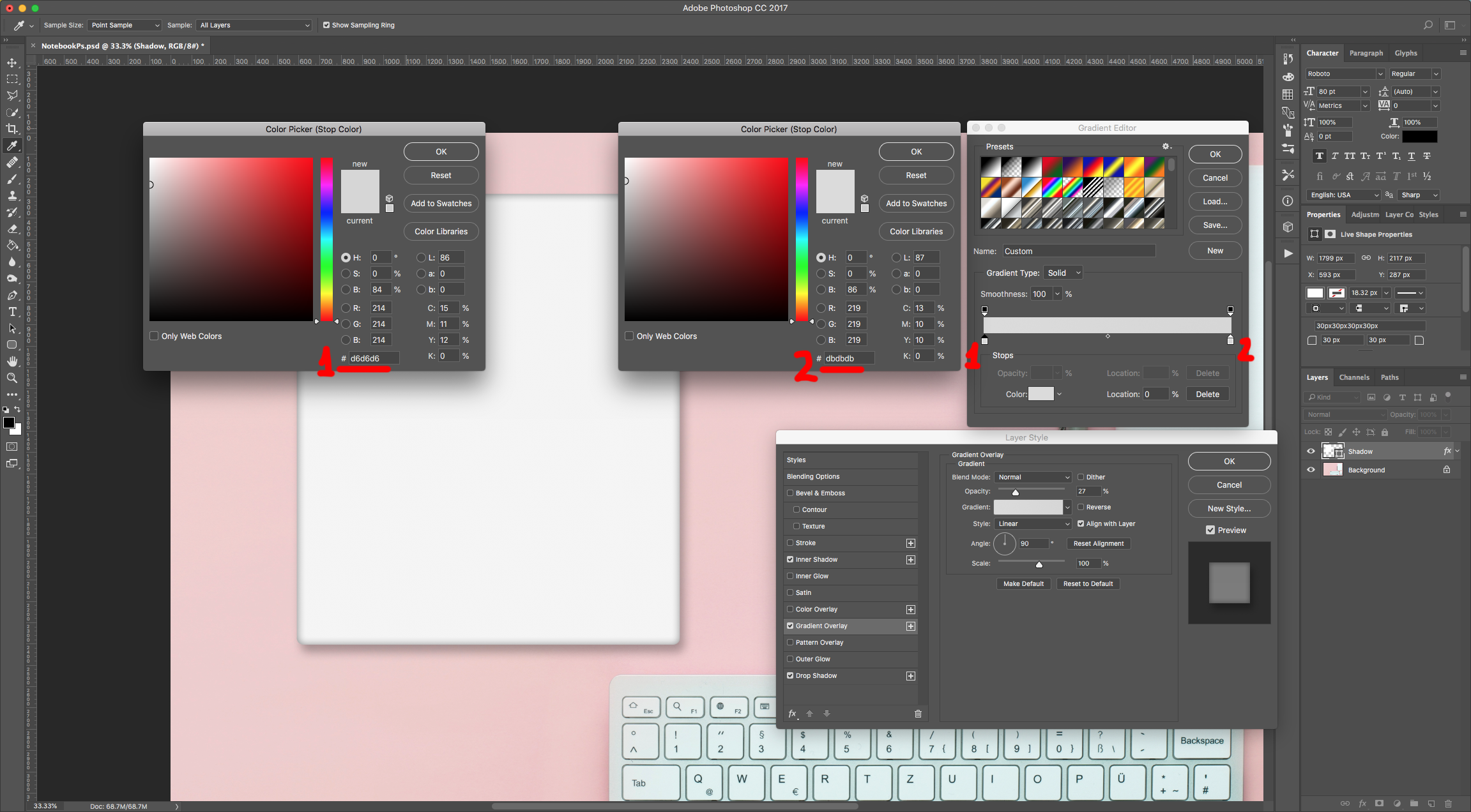
Inner Shadow:
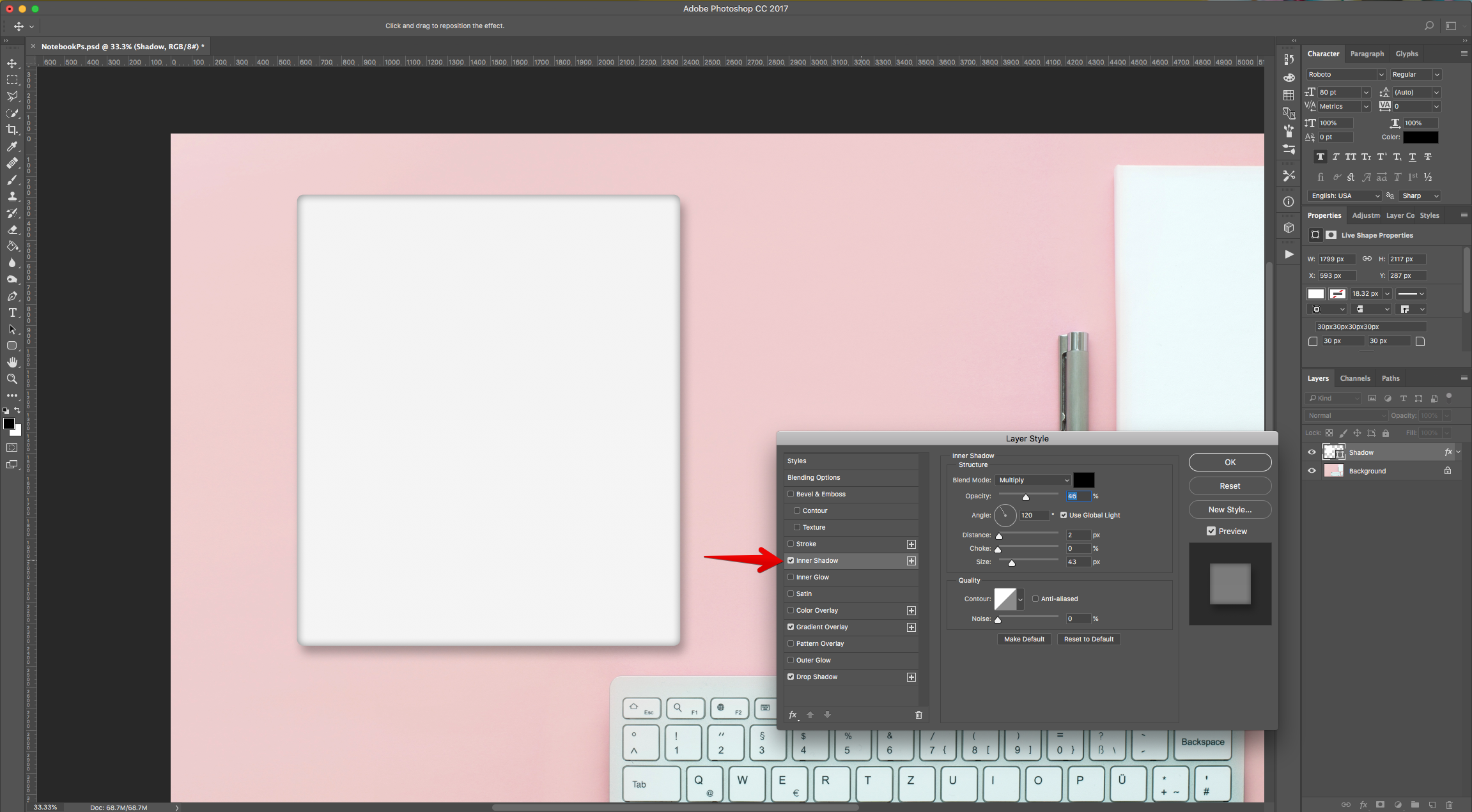
4 - “Duplicate” the layer (Command/Control + J) or by dragging its Thumbnail to the “Create New Layer” button at the bottom of the “Layers Panel” and name it “Paper”. Name the original one “Shadow”.
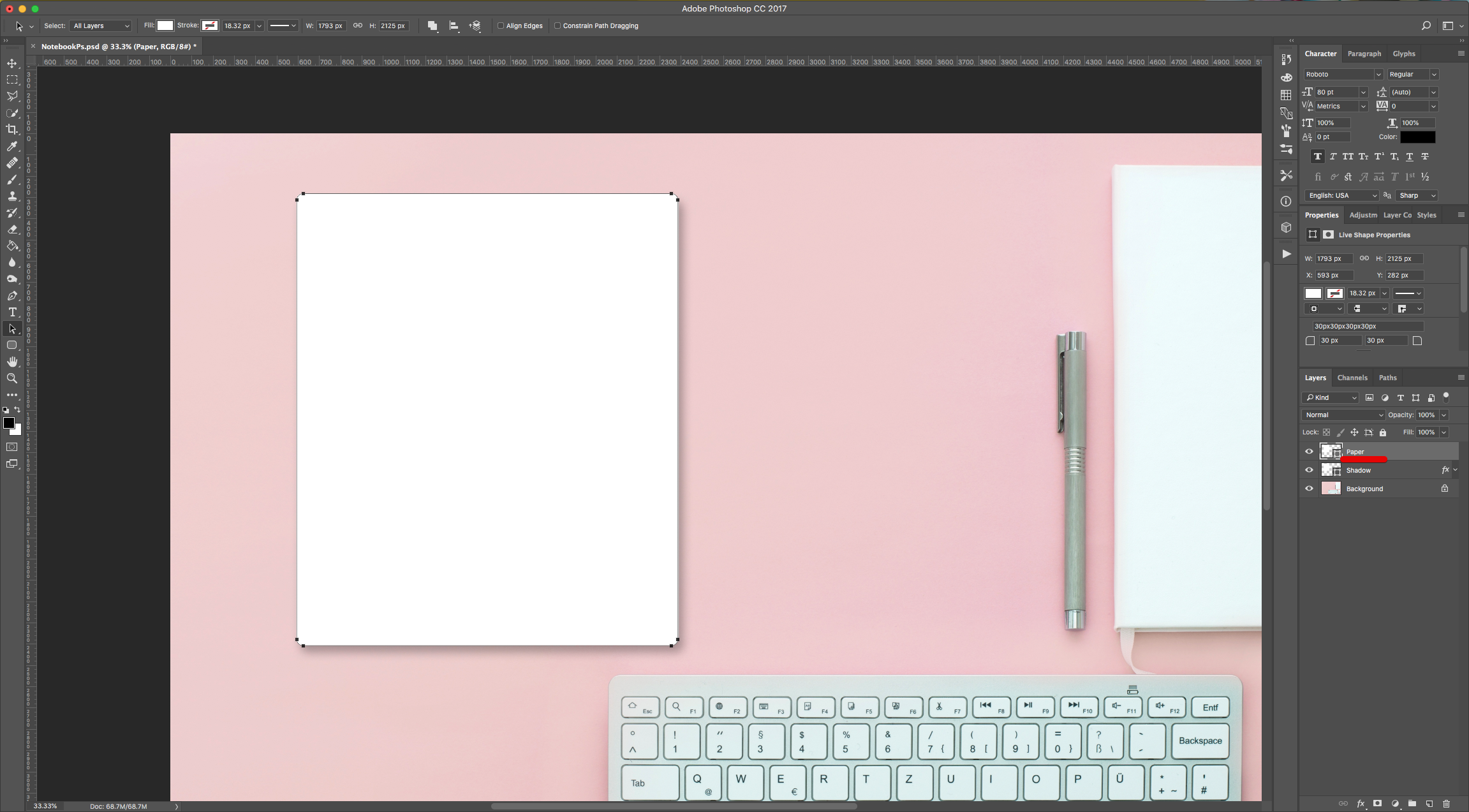
5 - Use “Free Transform” (Command/Control + T) to resize the “Paper” rectangle a bit leaving the top of both rectangles very close. Click on the small Check Mark on the Top Menu or hit “Enter” to “Commit” the changes.
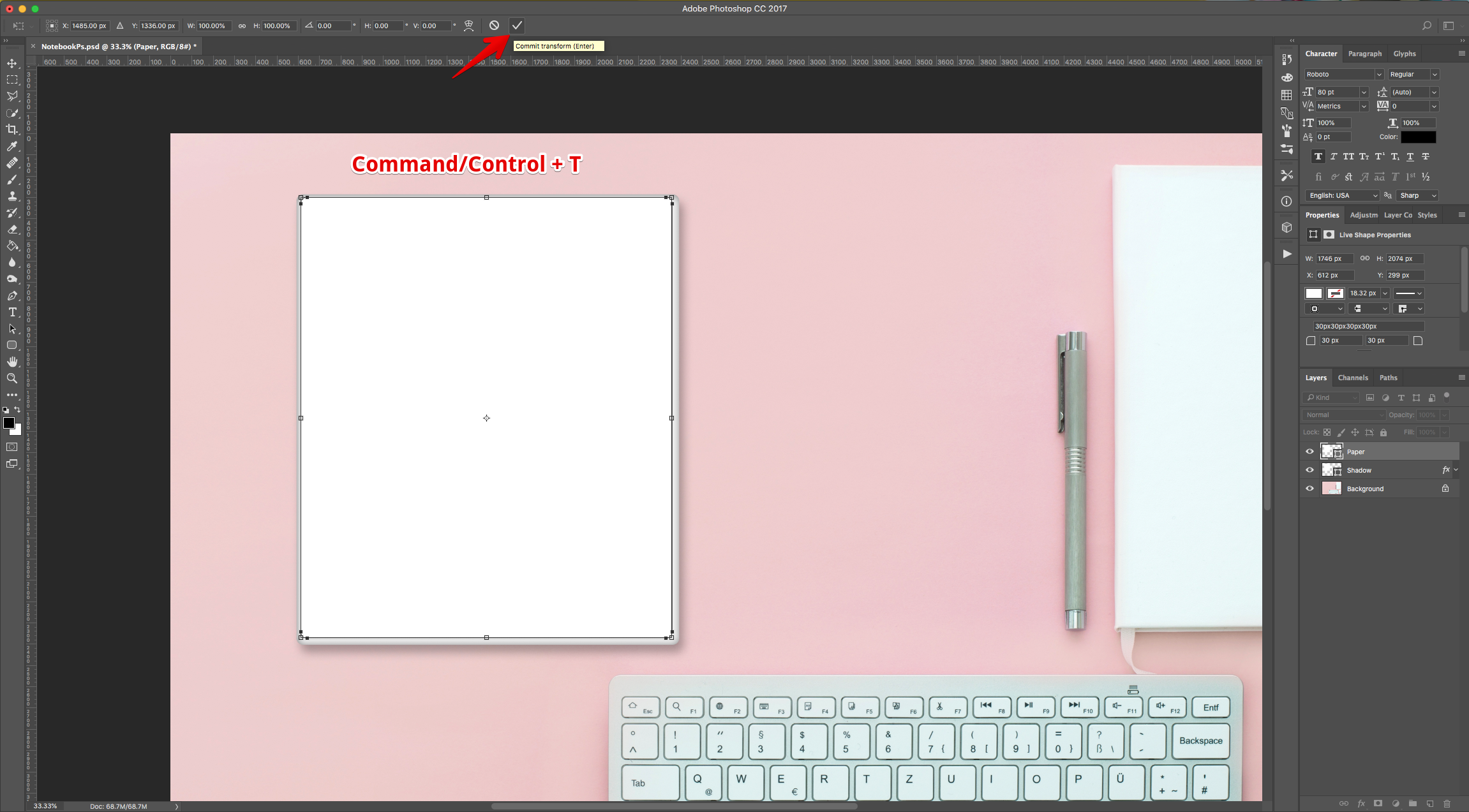
6 - Double-click on top of the “Paper” layer Thumbnail and change the “Layer Styles” values to the following:
Drop Shadow: (Contour: Sawtooth 1)
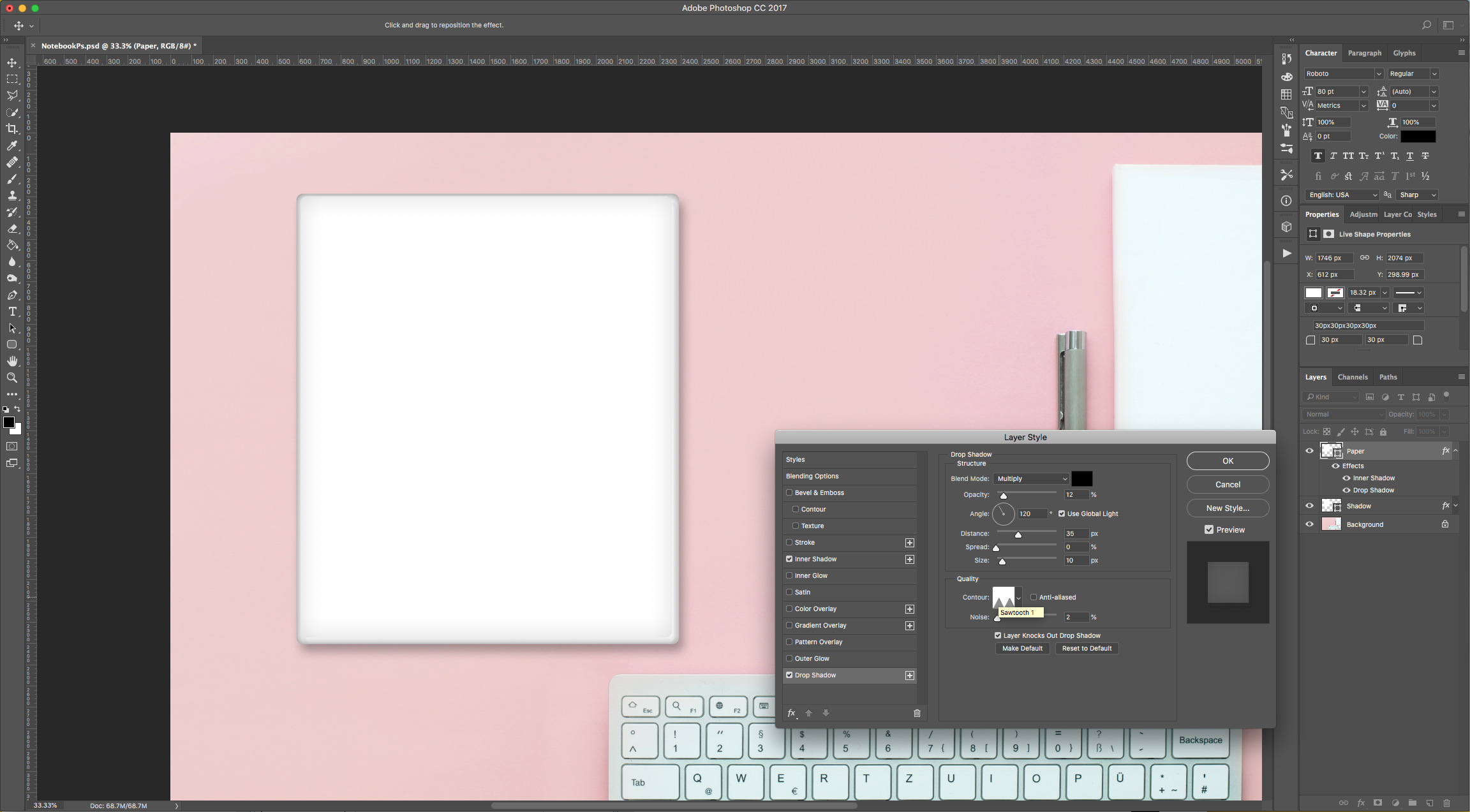
Inner Shadow:
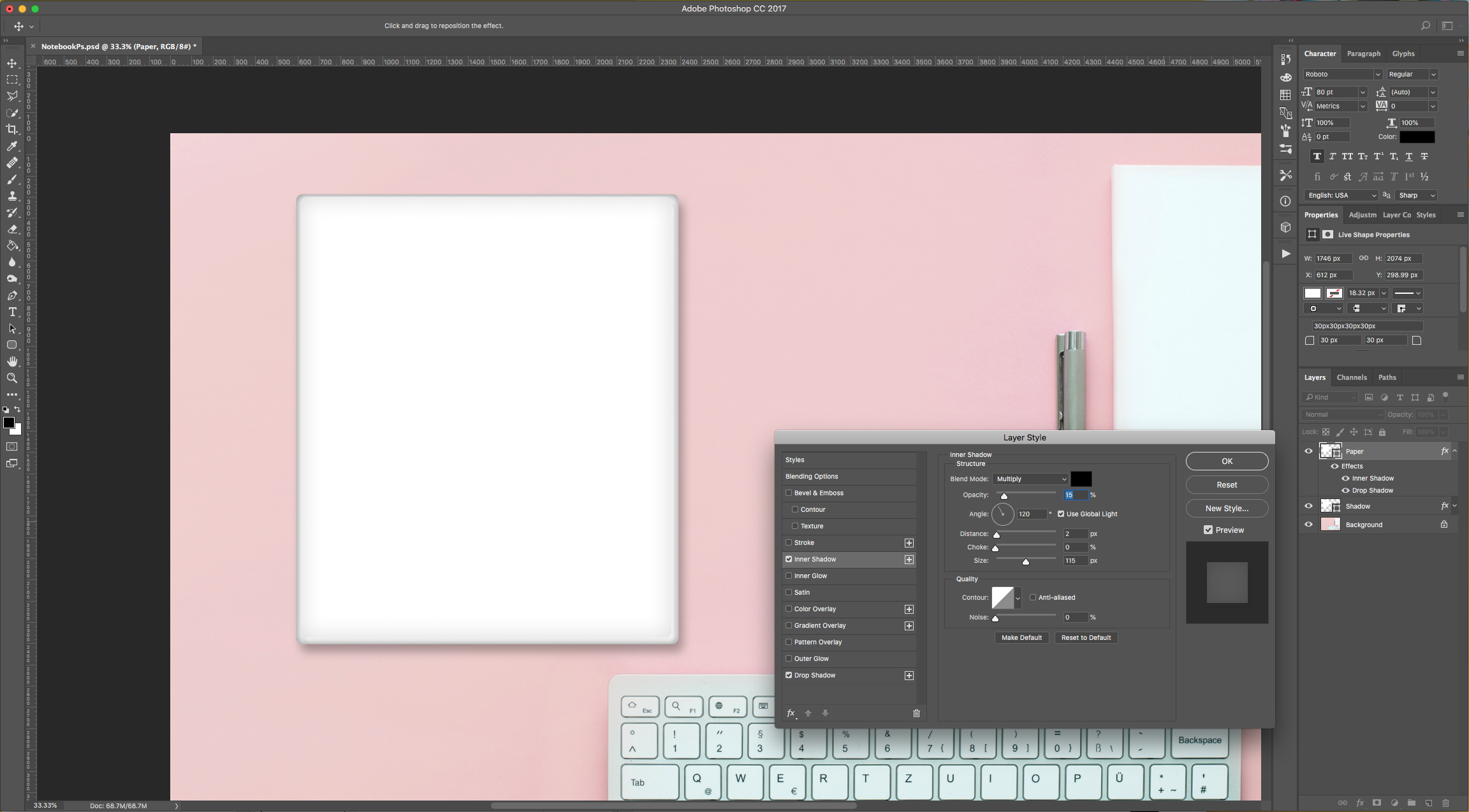
7 - Create a “New Layer” (Shift + Command/Control + N), name it “Horizontal” and make sure it is on top of everything.
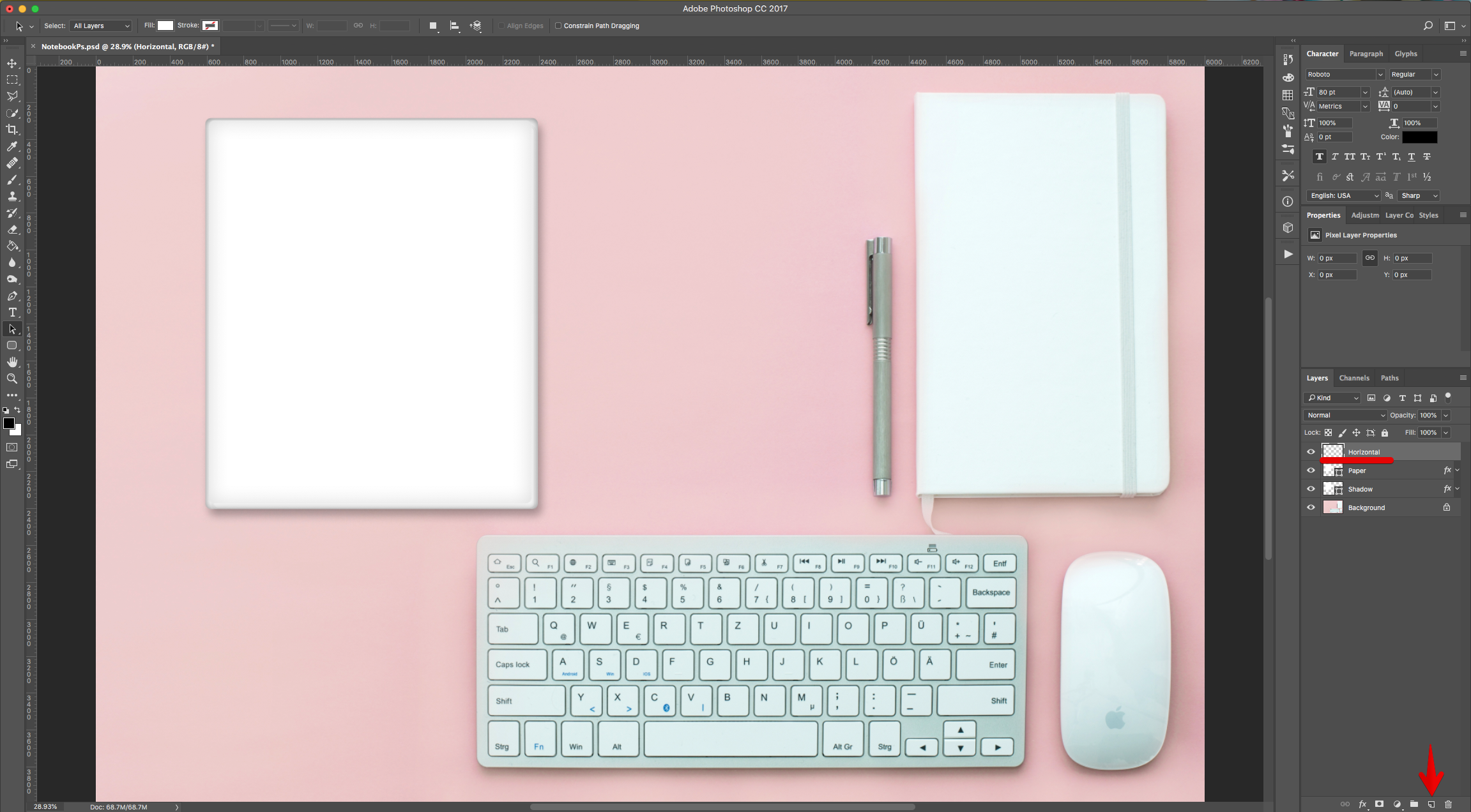
8 - Change the “Foreground” color to #00798f, select the “Brush Tool” (B) with a small and hard brush (2 px and 100% “Hardness”).
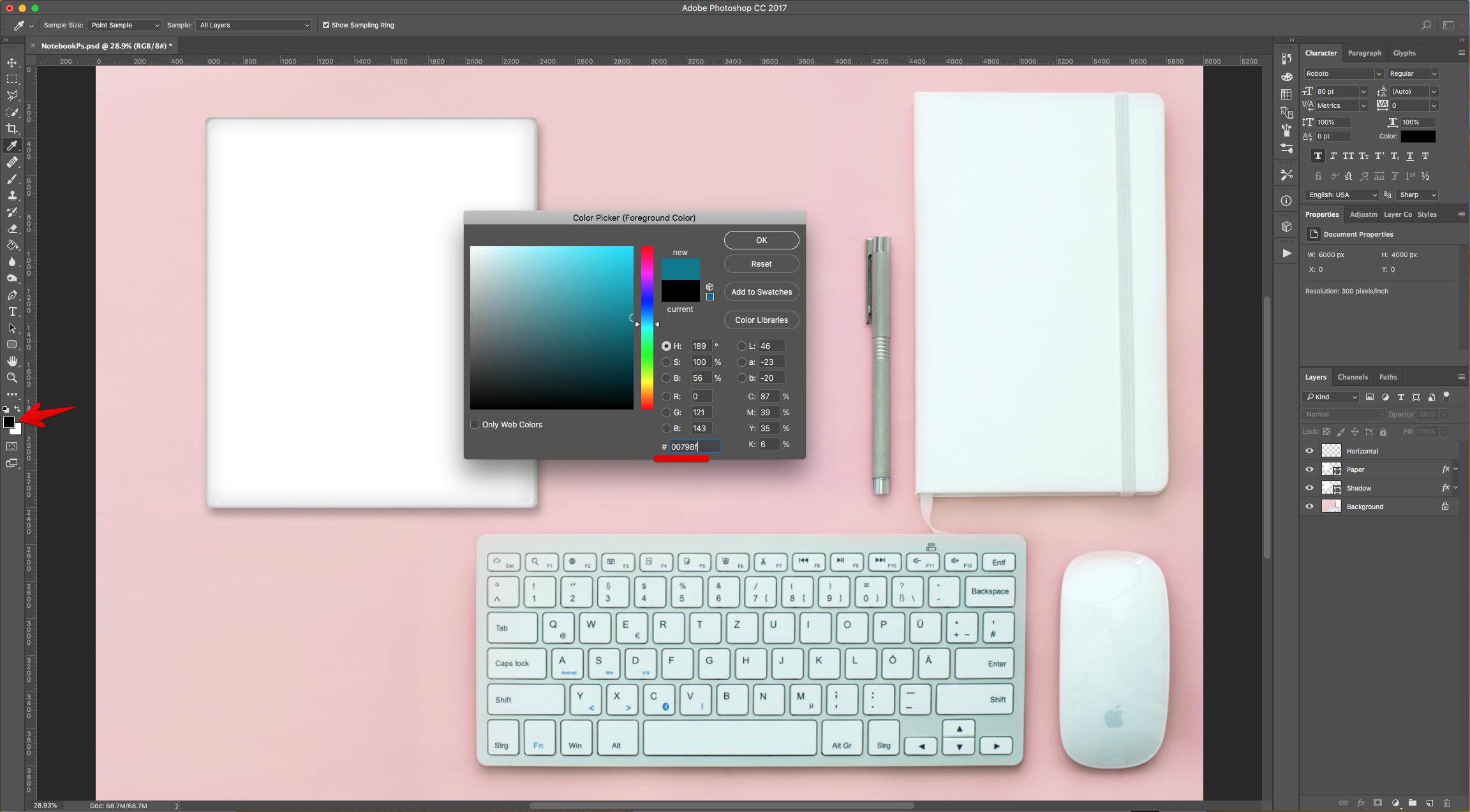
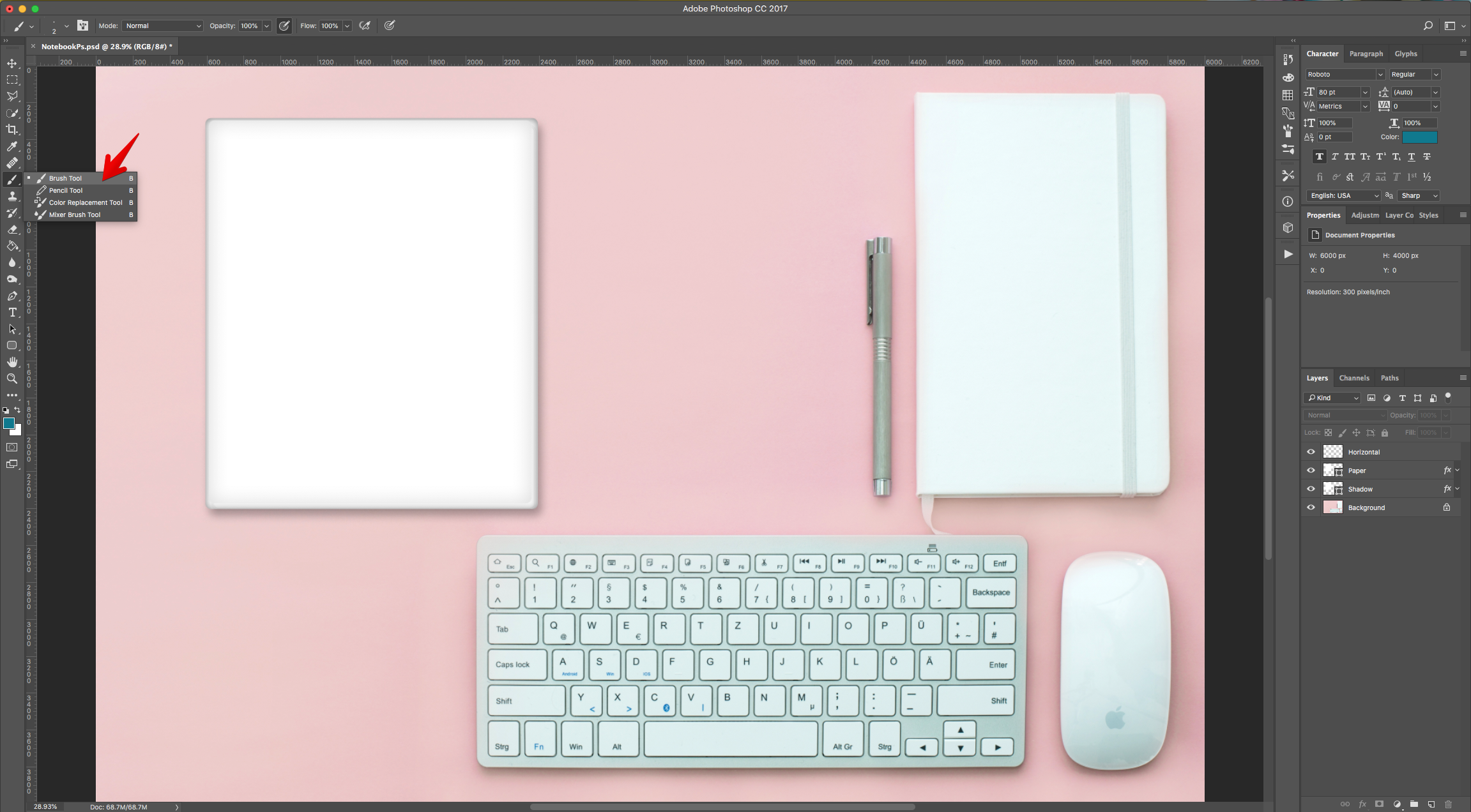

9 - With the “Horizontal” layer still selected “Command/Option” click on top of the “Paper” layer to make a selection. Then, draw “Horizontal” lines (hold the “Shift” key to make them straight). Start about 8 mm from the top and end at about 2 cm from the bottom mimicking the “Lines” in the “Notebook” page.



10 - Change the “Blending Mode” to “Multiply” and lower the “Opacity” to 50%.
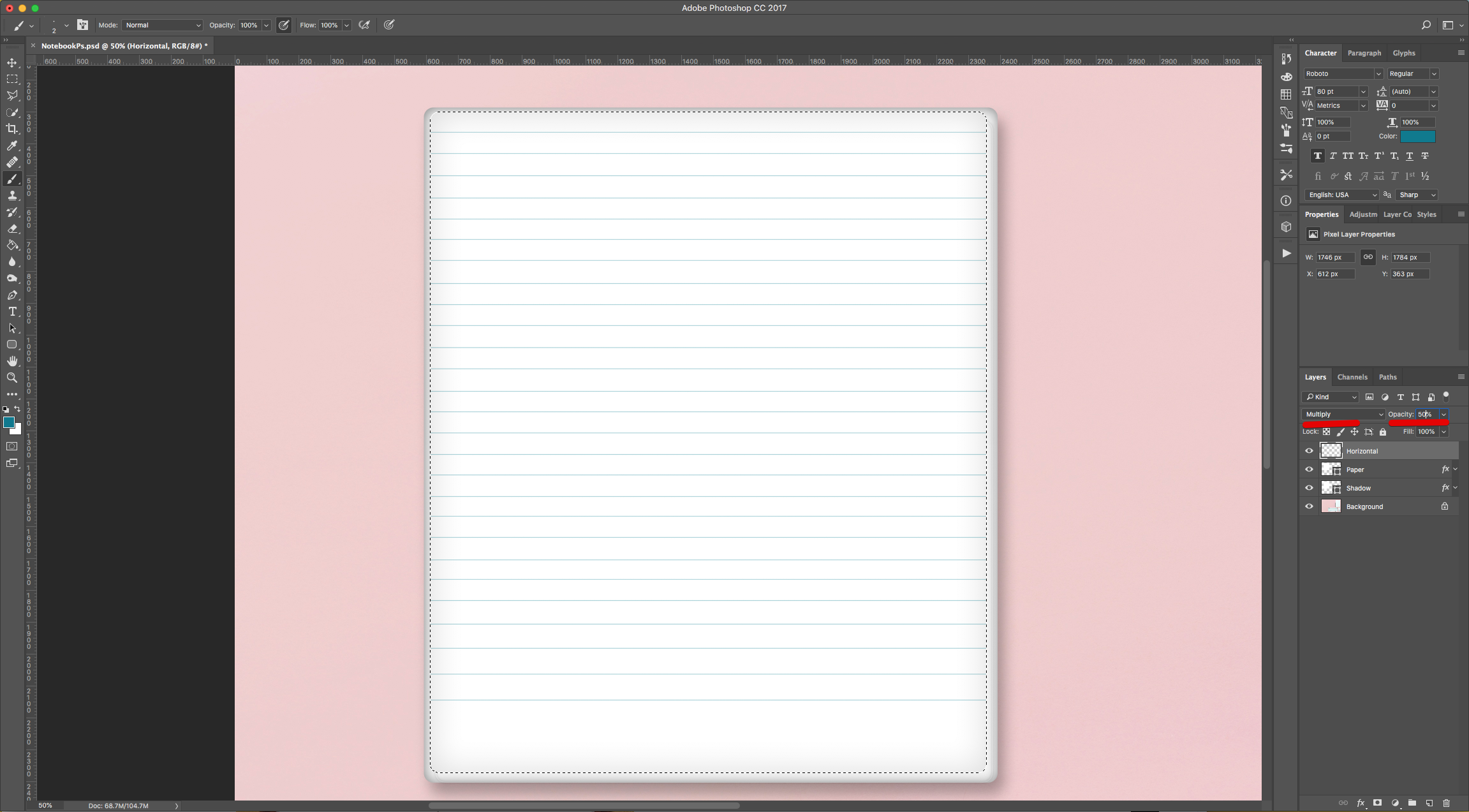
11 - Create another layer on top of everything and name it “Vertical”.
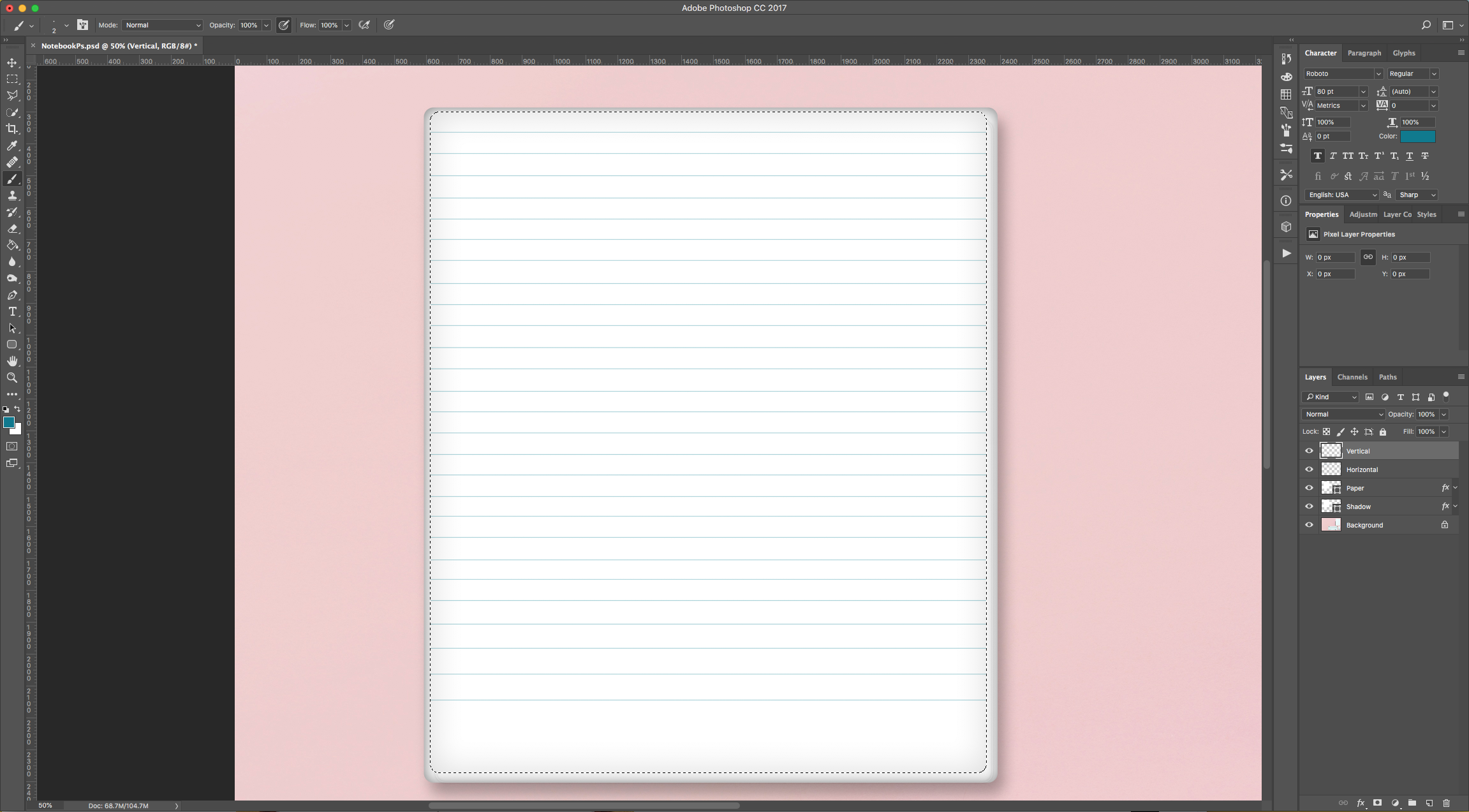
12 - Change the “Foreground” color to #fa2a2a and draw two “Vertical” lines (hold the “Shift” key to make them straight). At about 2 cm from the left side of the page mimicking the “Margins” in the “Notebook” page.
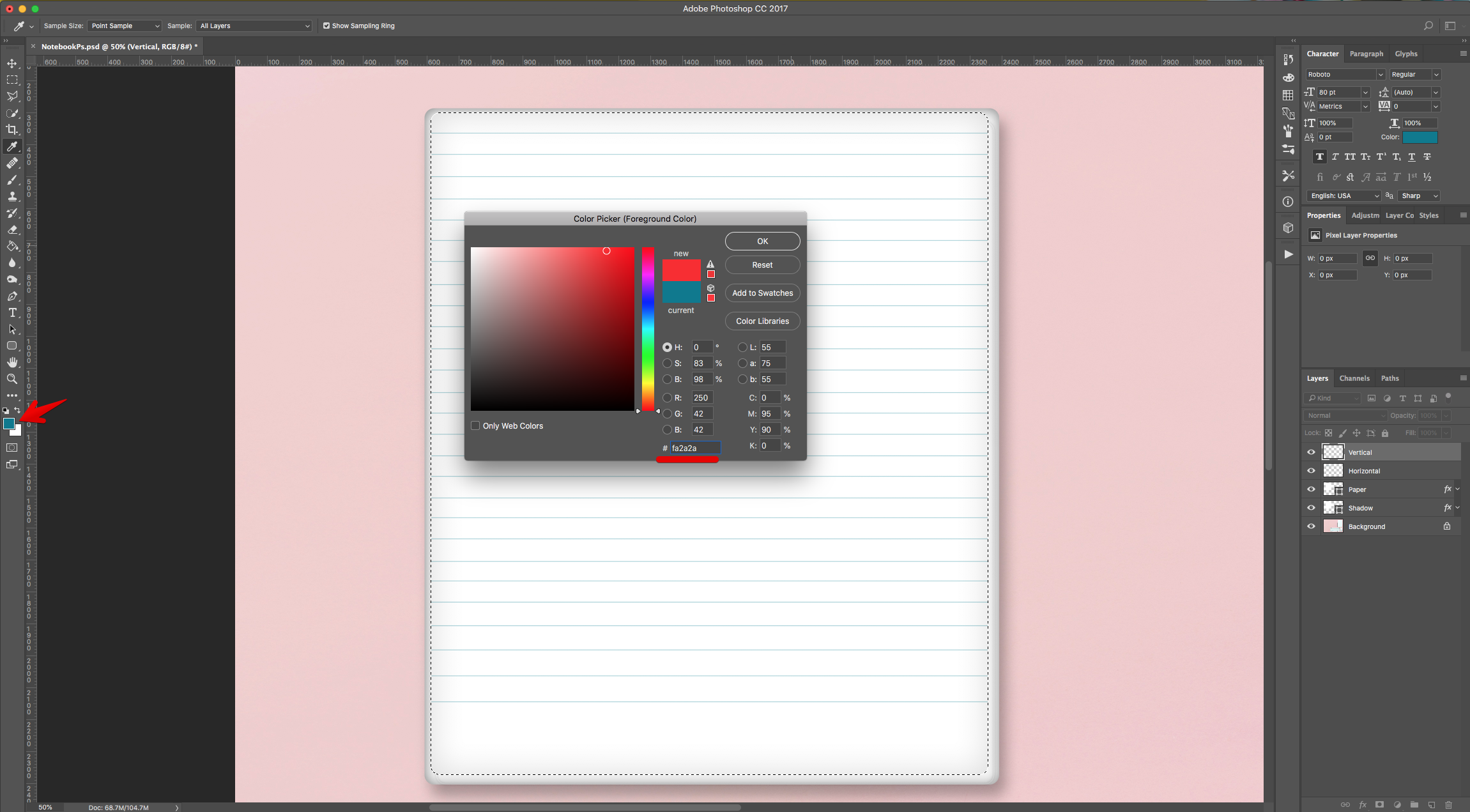
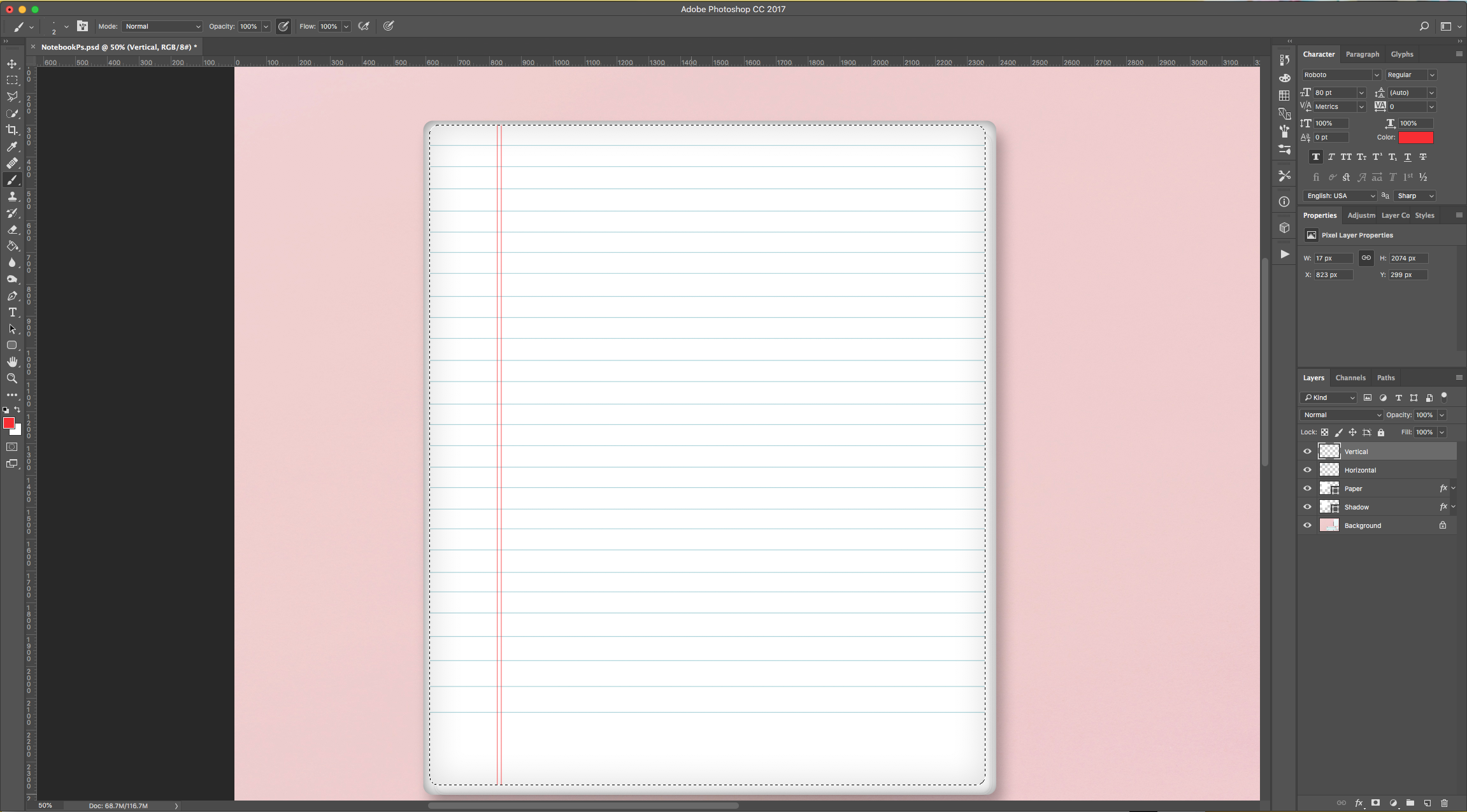
13 - Change the “Blending Mode” to “Linear Burn” and lower the “Opacity” to 50%.
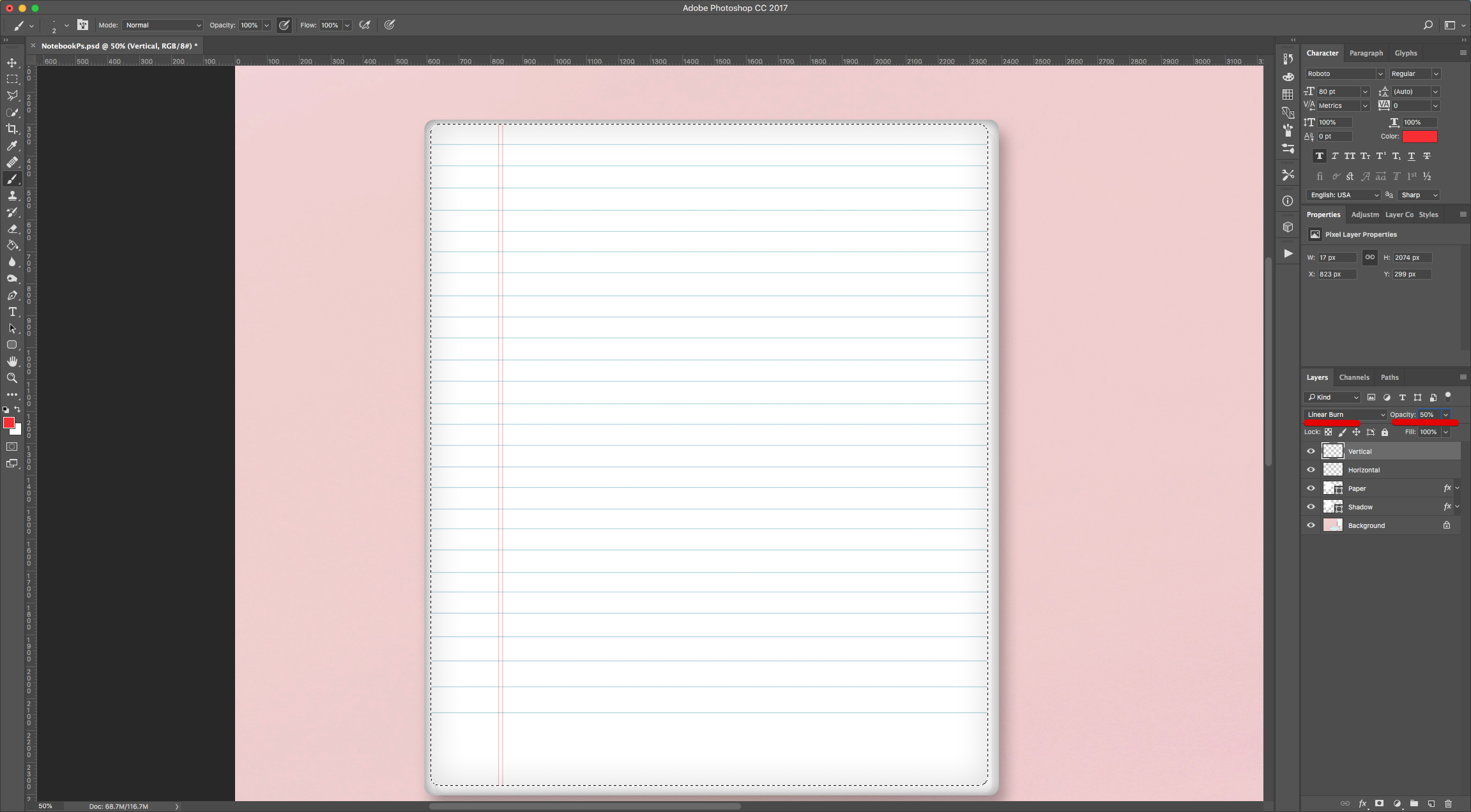
14 - Double-click on top of the “Paper” layer Thumbnail and add this to the “Layer Styles”:
Stoke:
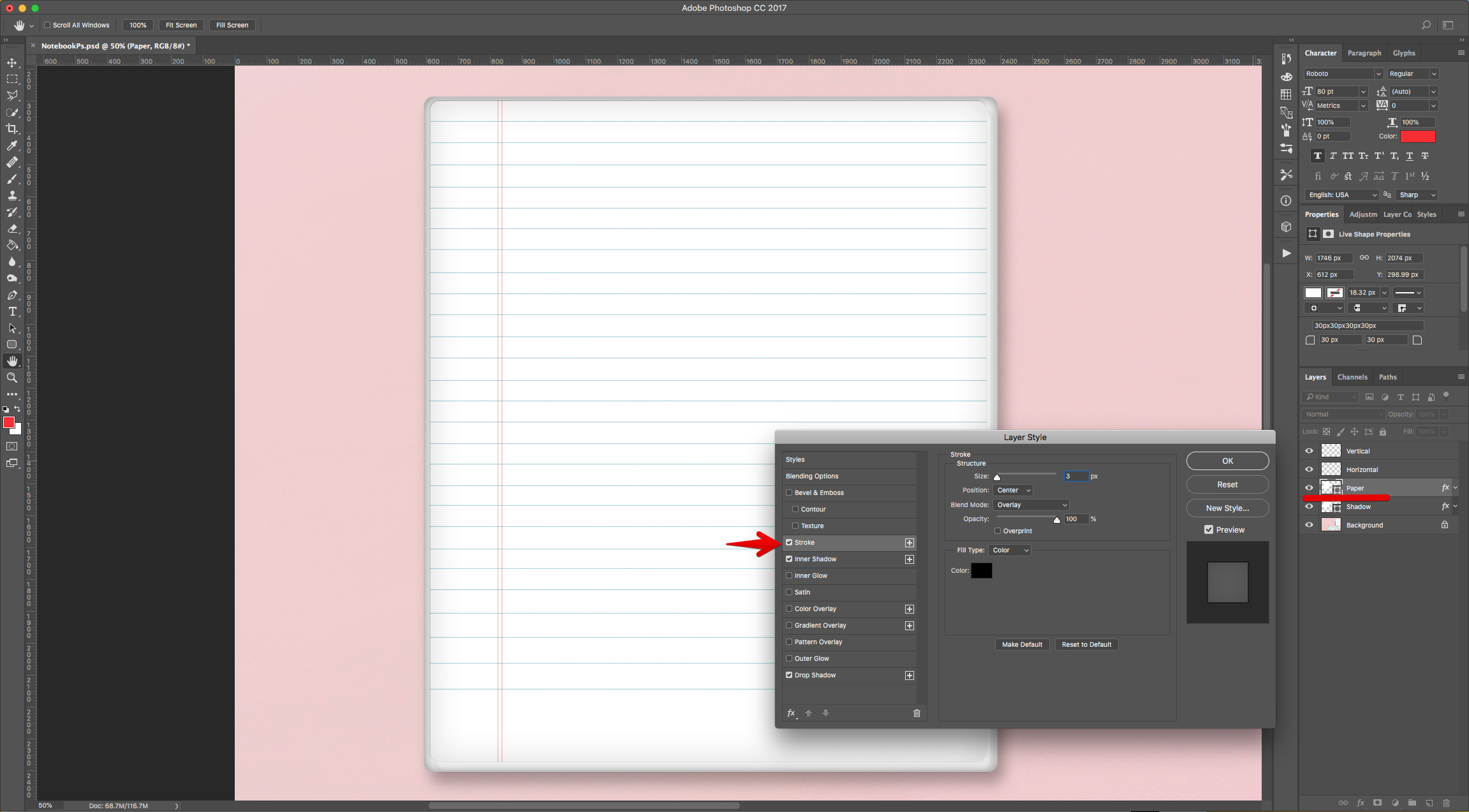
15 - Select the “Ellipse Tool” (U), Black as “Foreground” color and make a small circle to mimic the “Notebook” holes.
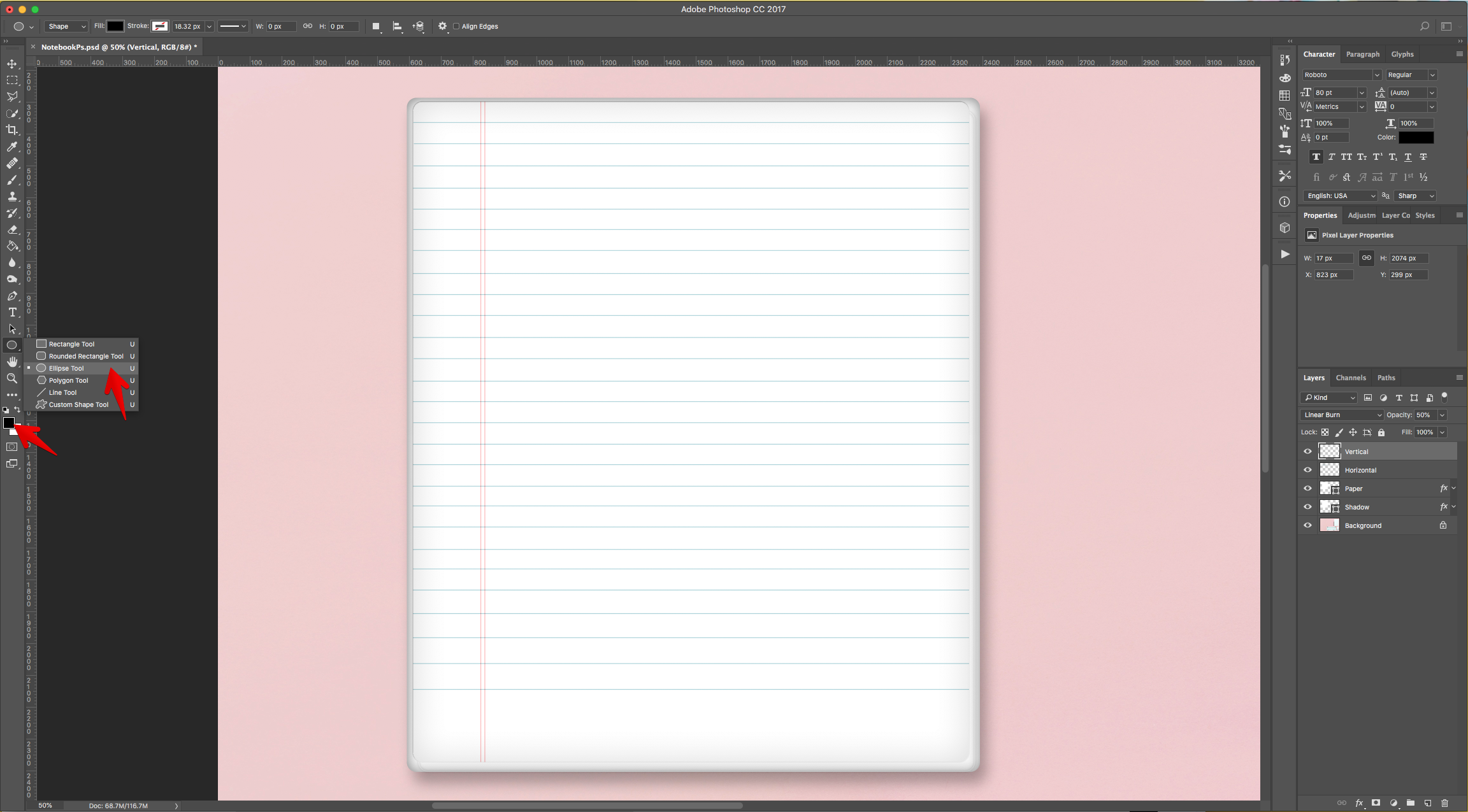
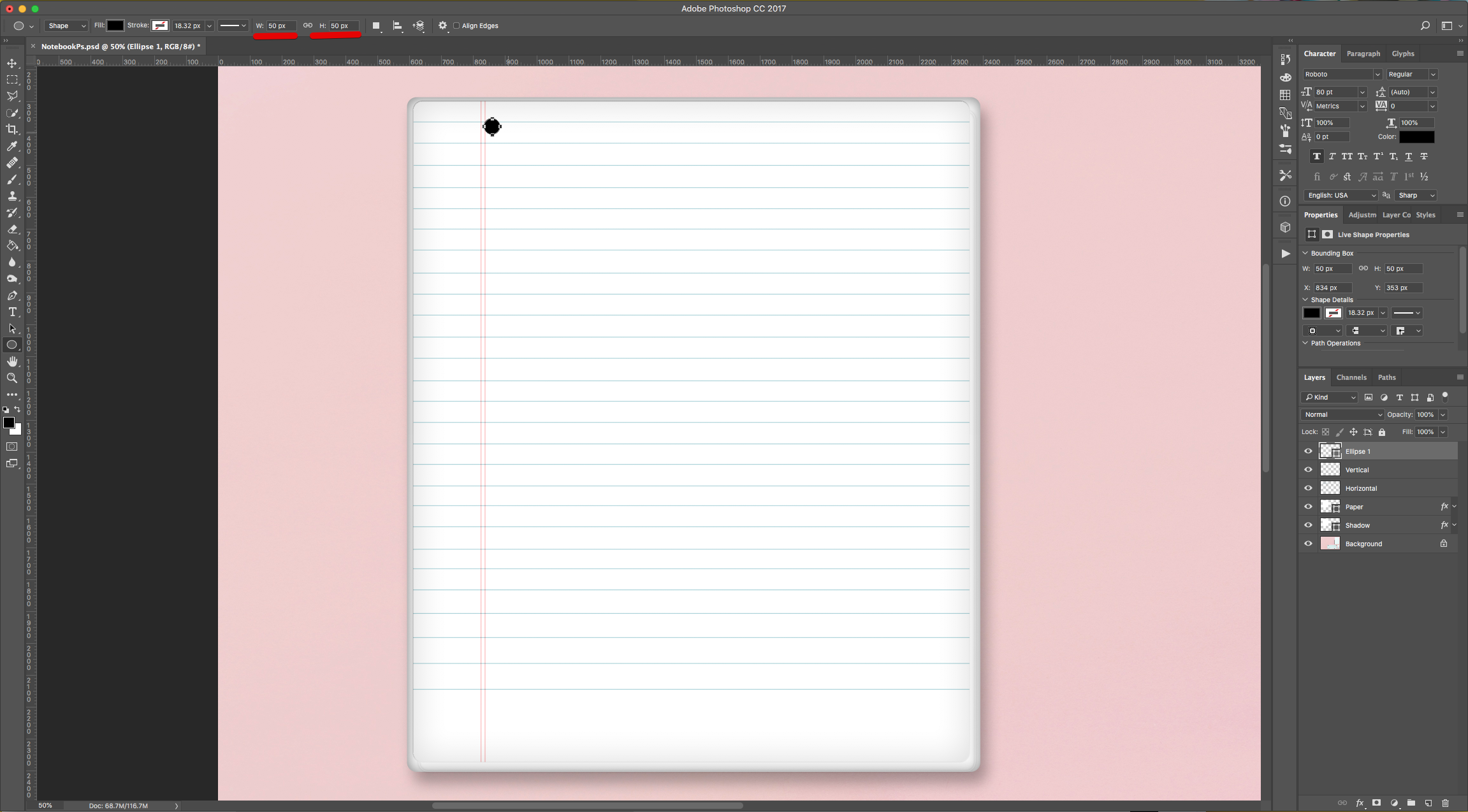
16 - Place it on the Top-Left side of the “Page” inside the “Margin” area. “Duplicate” it a couple of times by dragging its Thumbnail to the “Create New Layer” button at the bottom of the “Layers Panel” and distribute the duplicates in the center and bottom of the “Margin” area.
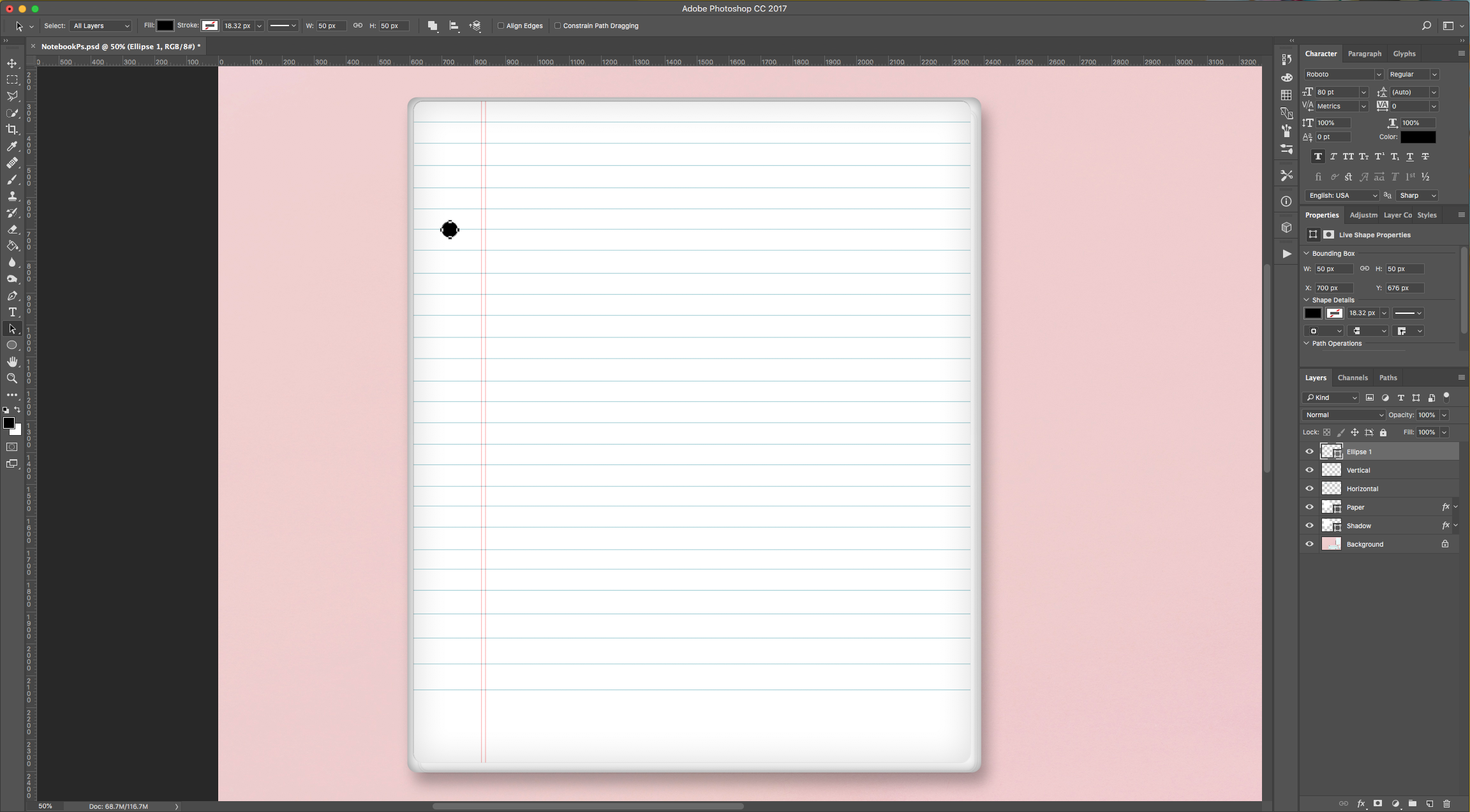
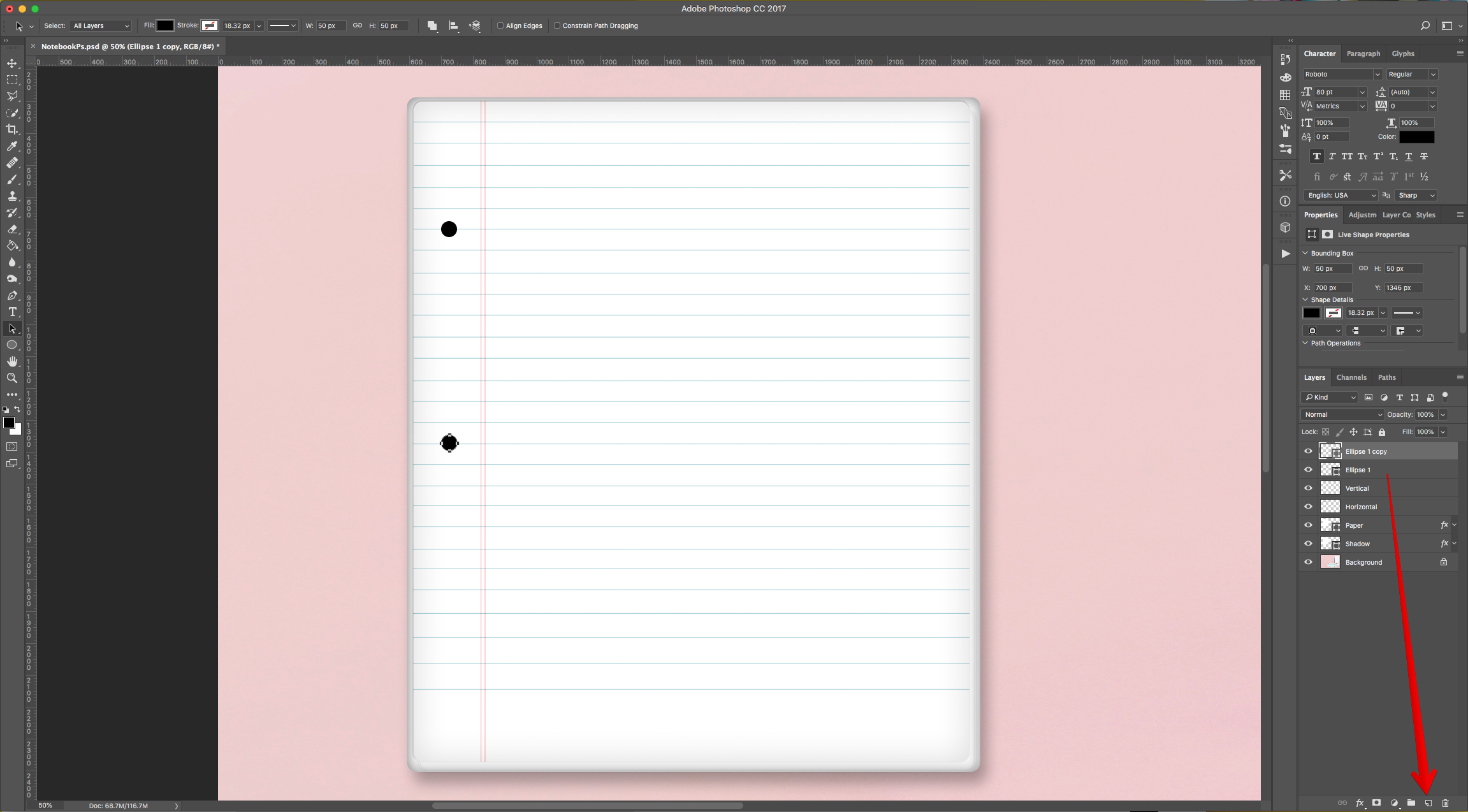
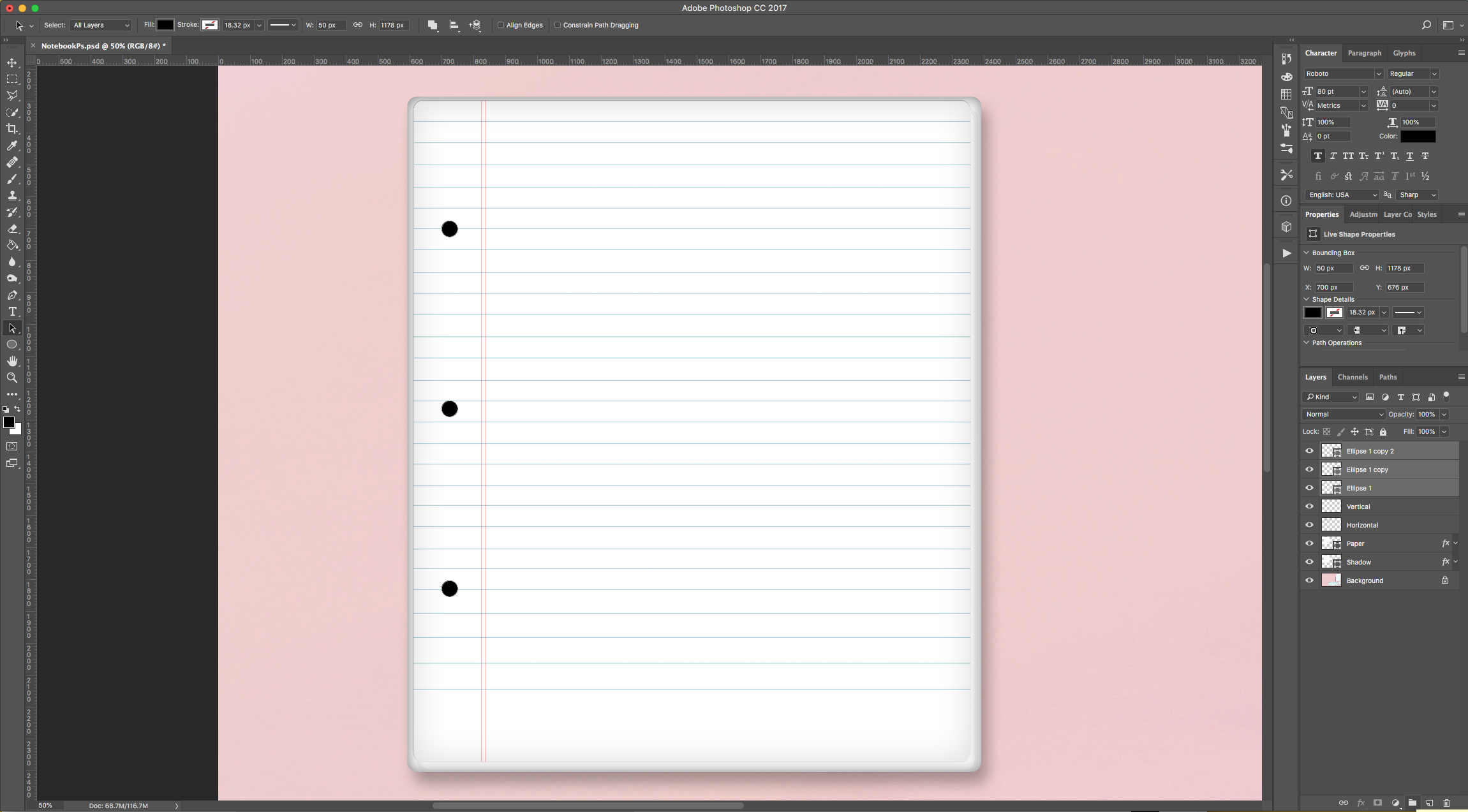
17 - Select all the “Circle” layers (using the “Shift” key) and “Group” them together by clicking on the small “Folder” icon at the bottom of the “Layers Panel”. Name the Group “Circles”.
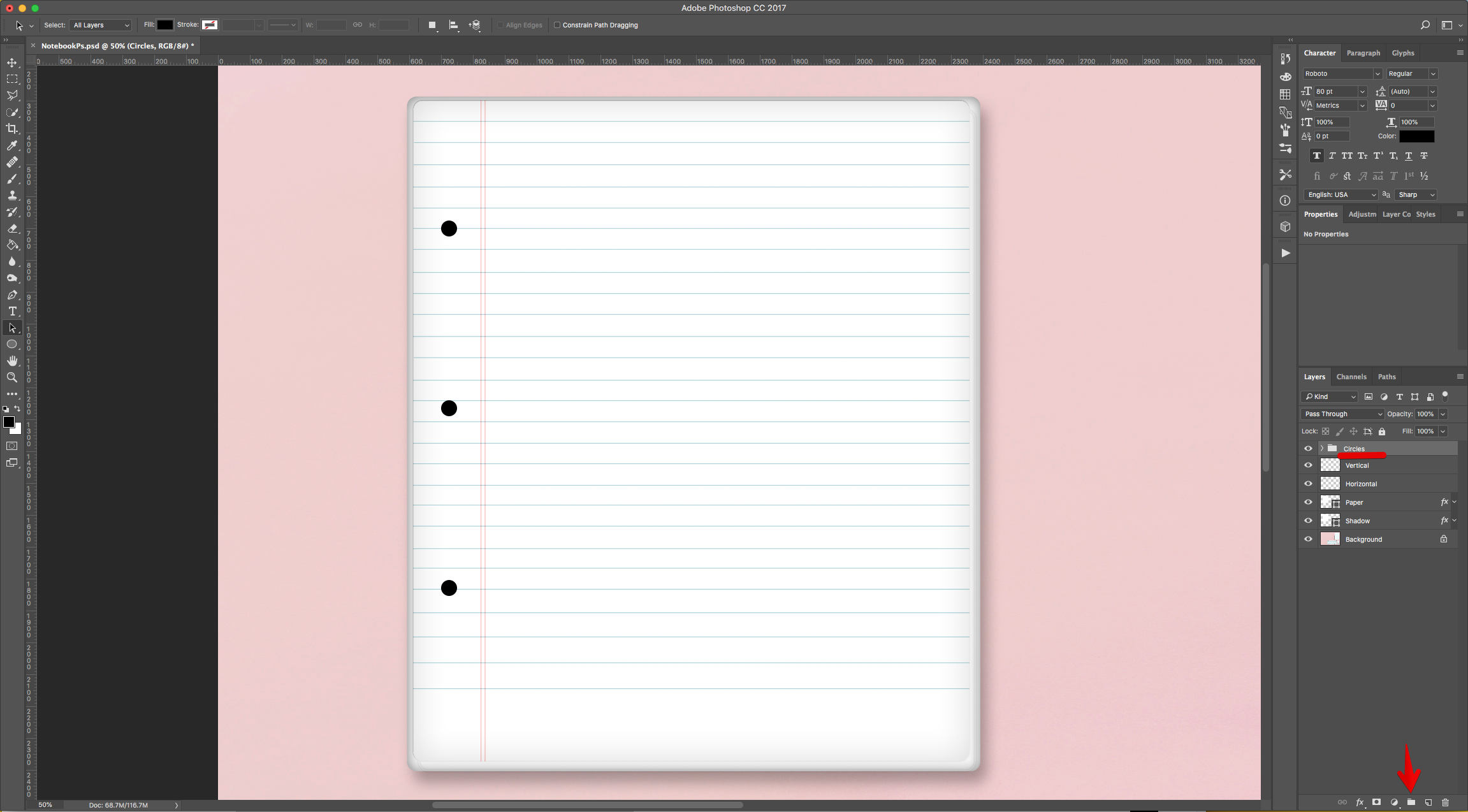
18 - Double-click on top of its Thumbnail and apply the following “Layer Styles”:
Inner Shadow:
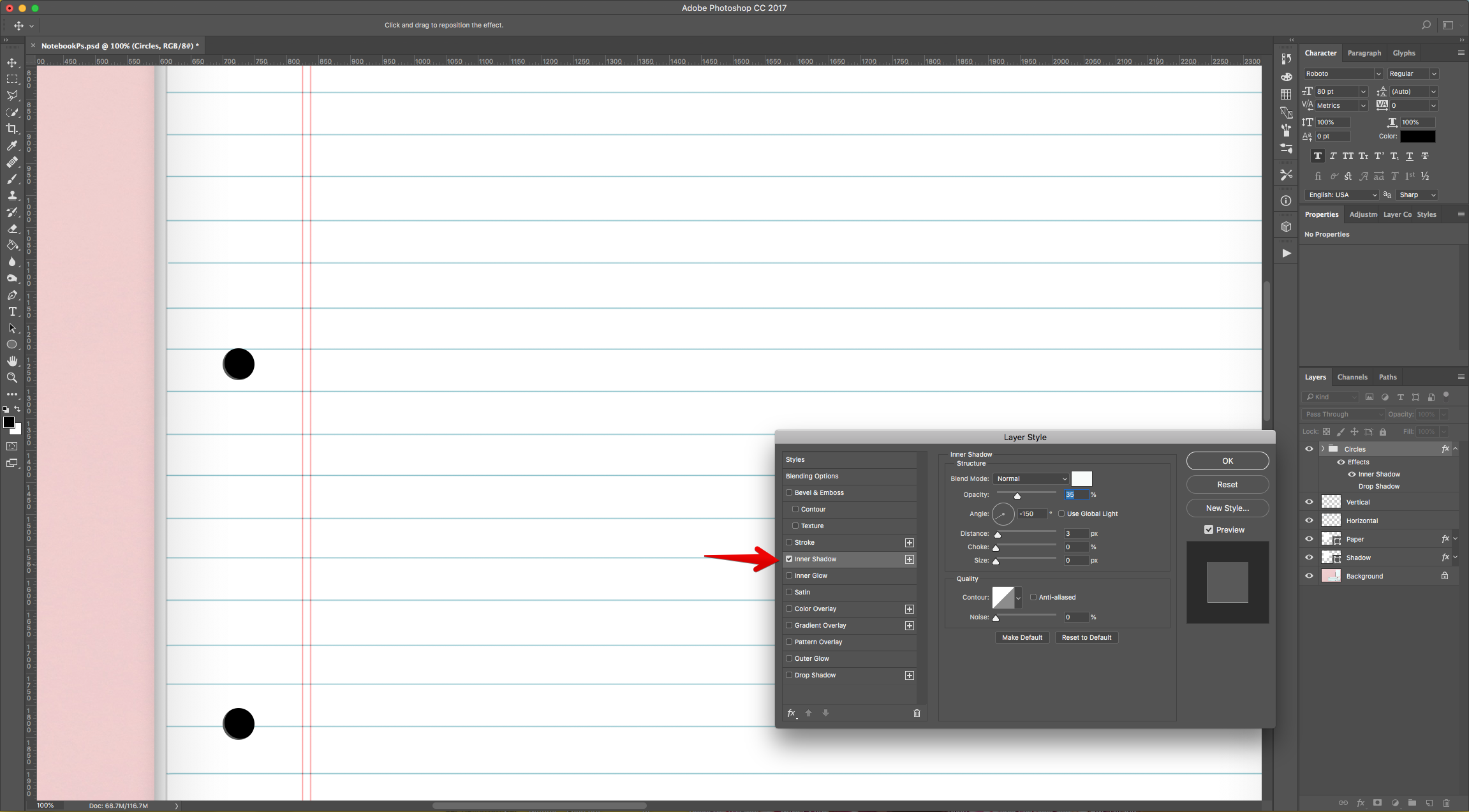
Drop Shadow:
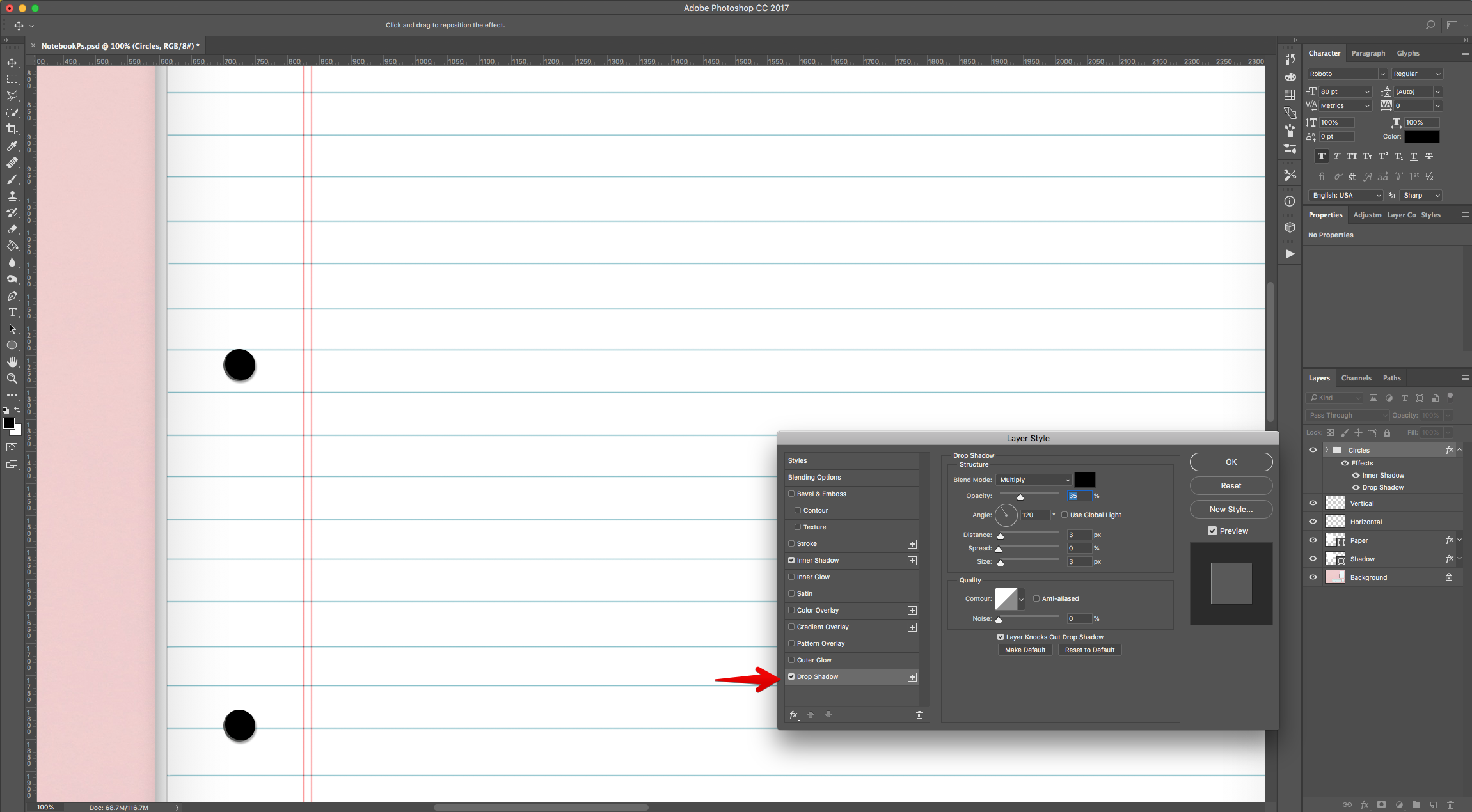
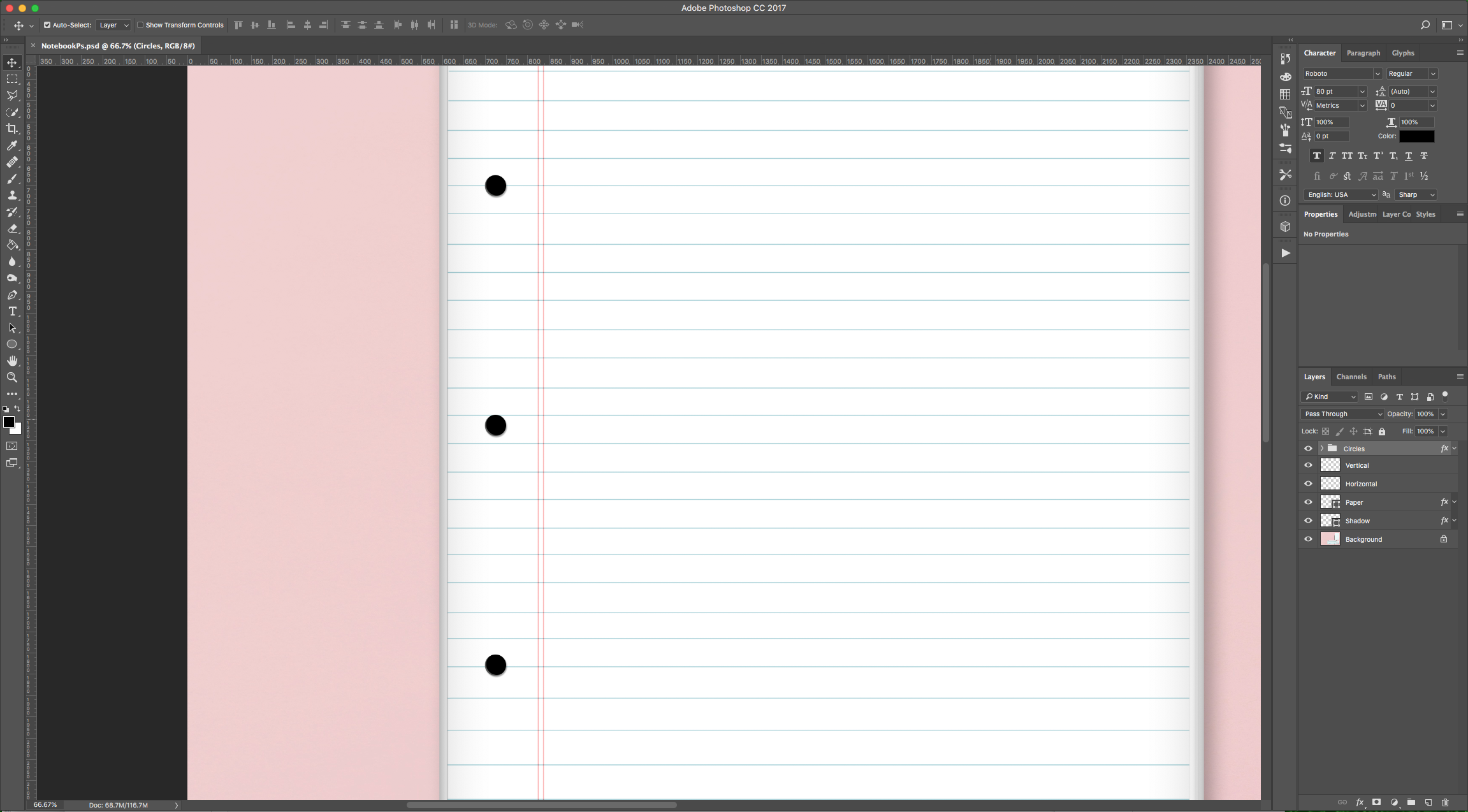
19 - Use the “Rounded Rectangle Tool” (U), to create a “Rectangular” shape that starts from outside the “Page” and ends inside one of the “Circles”. It should be the “Wire” that holds the pages together. Name it “Sipral”.
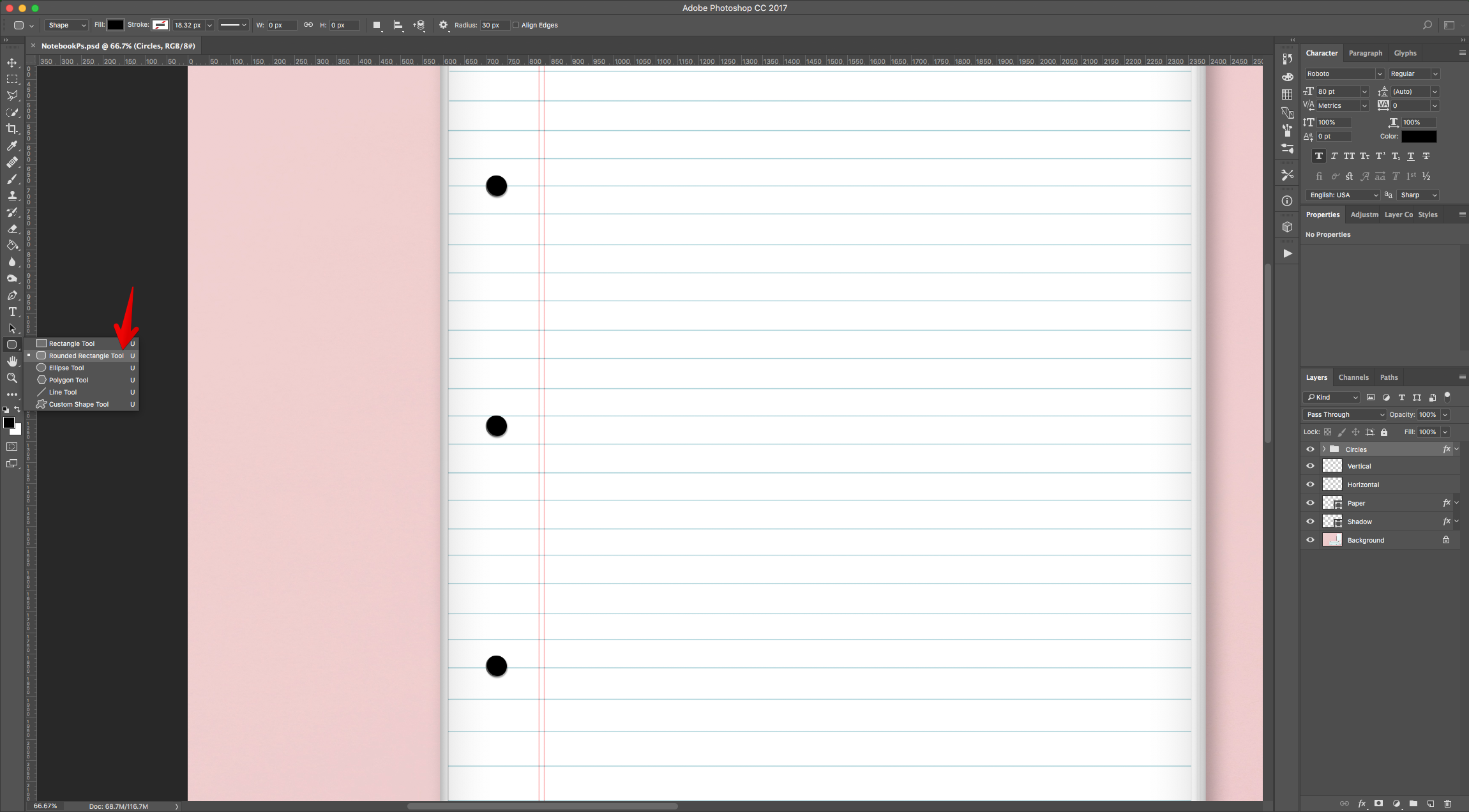
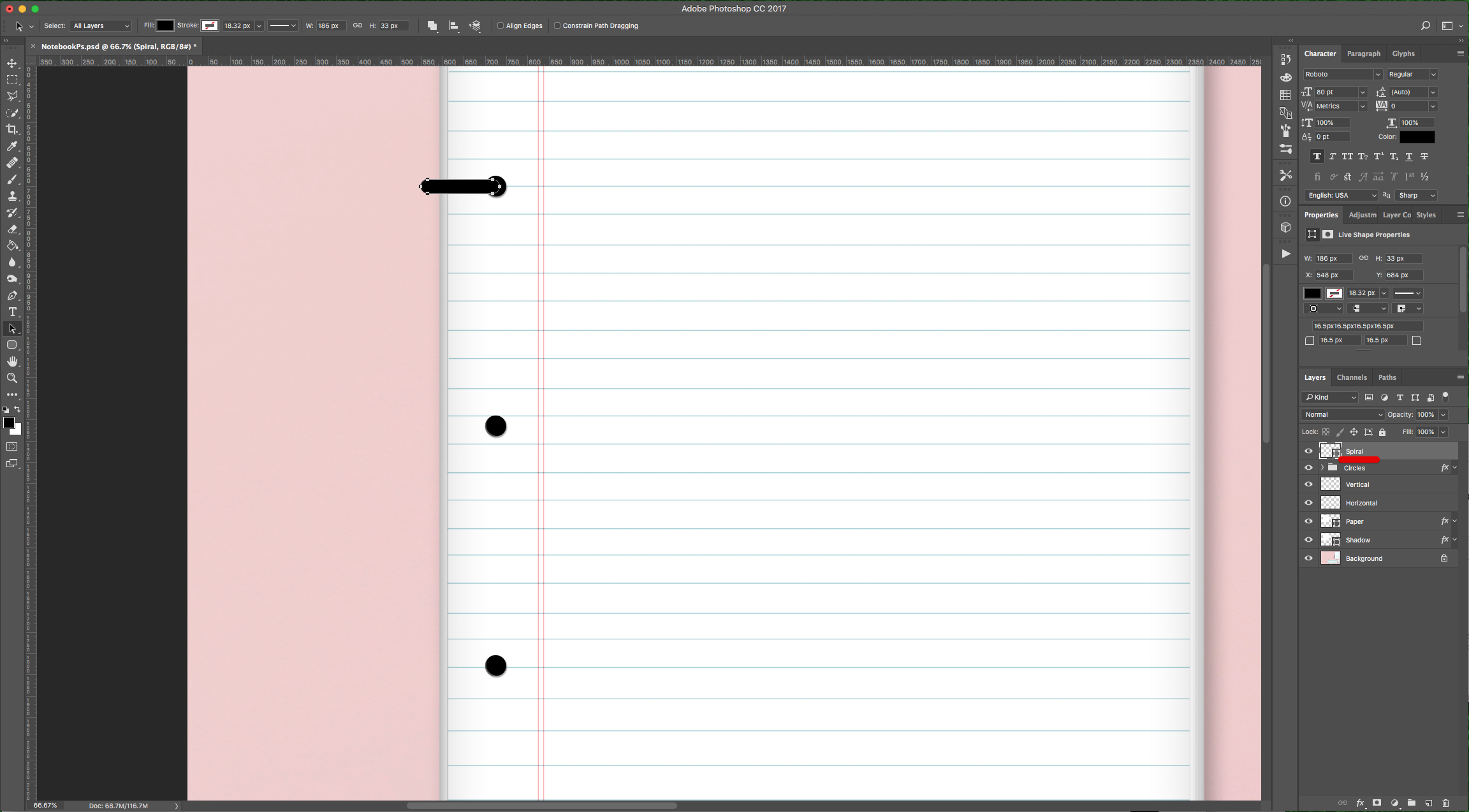
20 - Double-click on top of its Thumbnail and apply the following “Layer Styles”:
Inner Shadow:
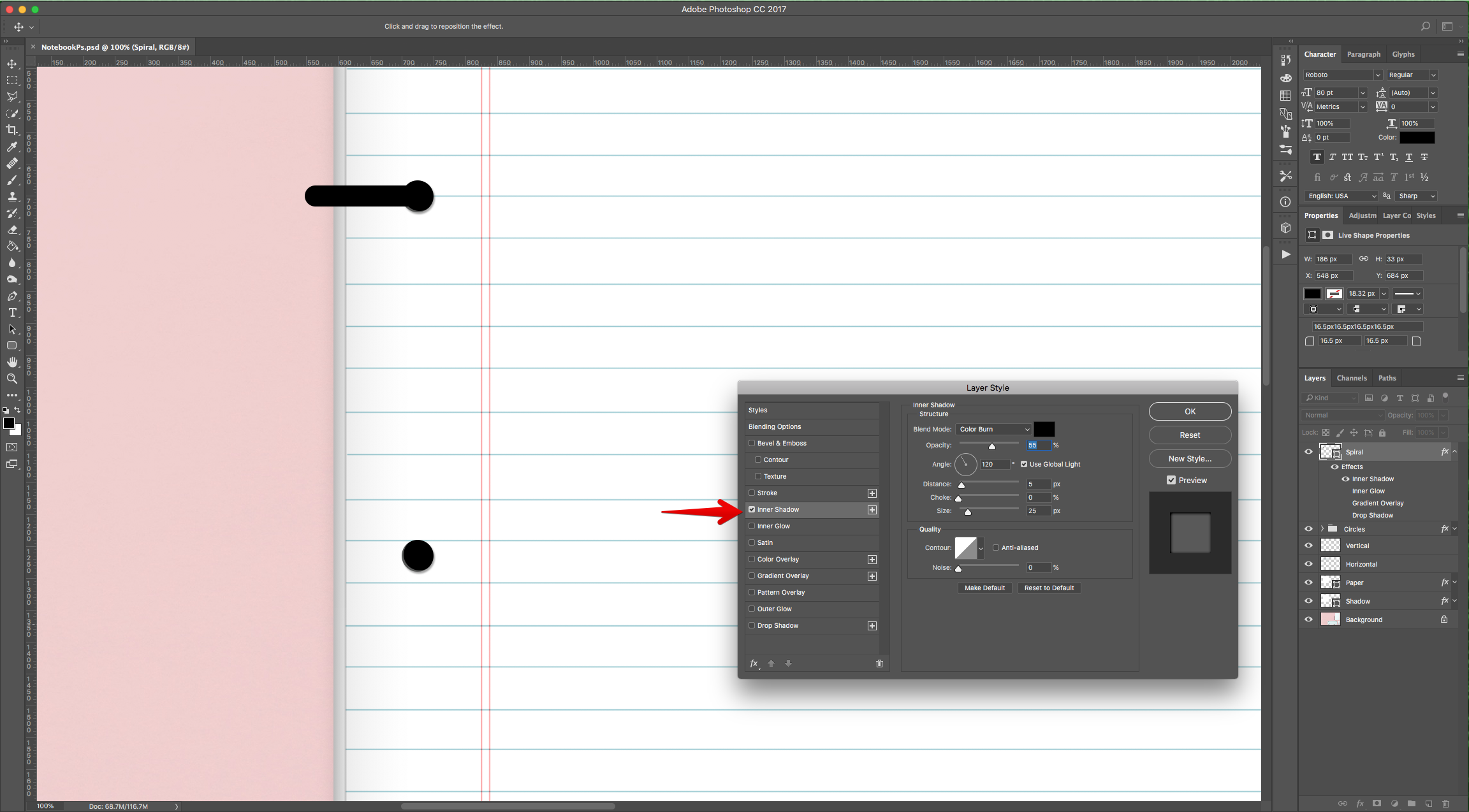
Inner Glow: (#e0dfdf)
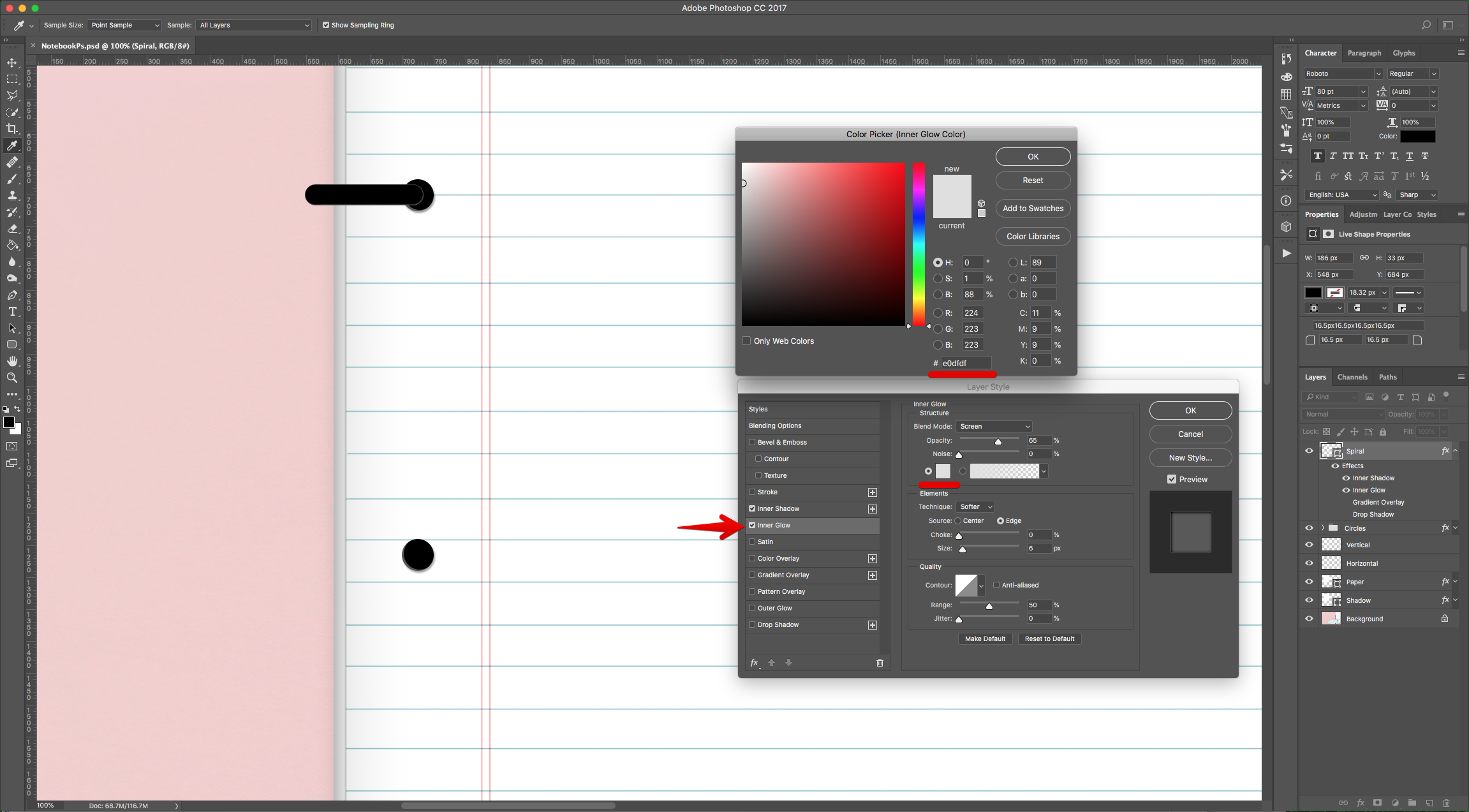
Gradient Overlay: (Location: 0%, Fill: #a0a0a0; Location: 28%, Fill: #c6c6c6; Location: 45%, Fill: #eeeeee; Location: 73%, Fill: # c6c6c6; Location: 100%, Fill: #a0a0a0)
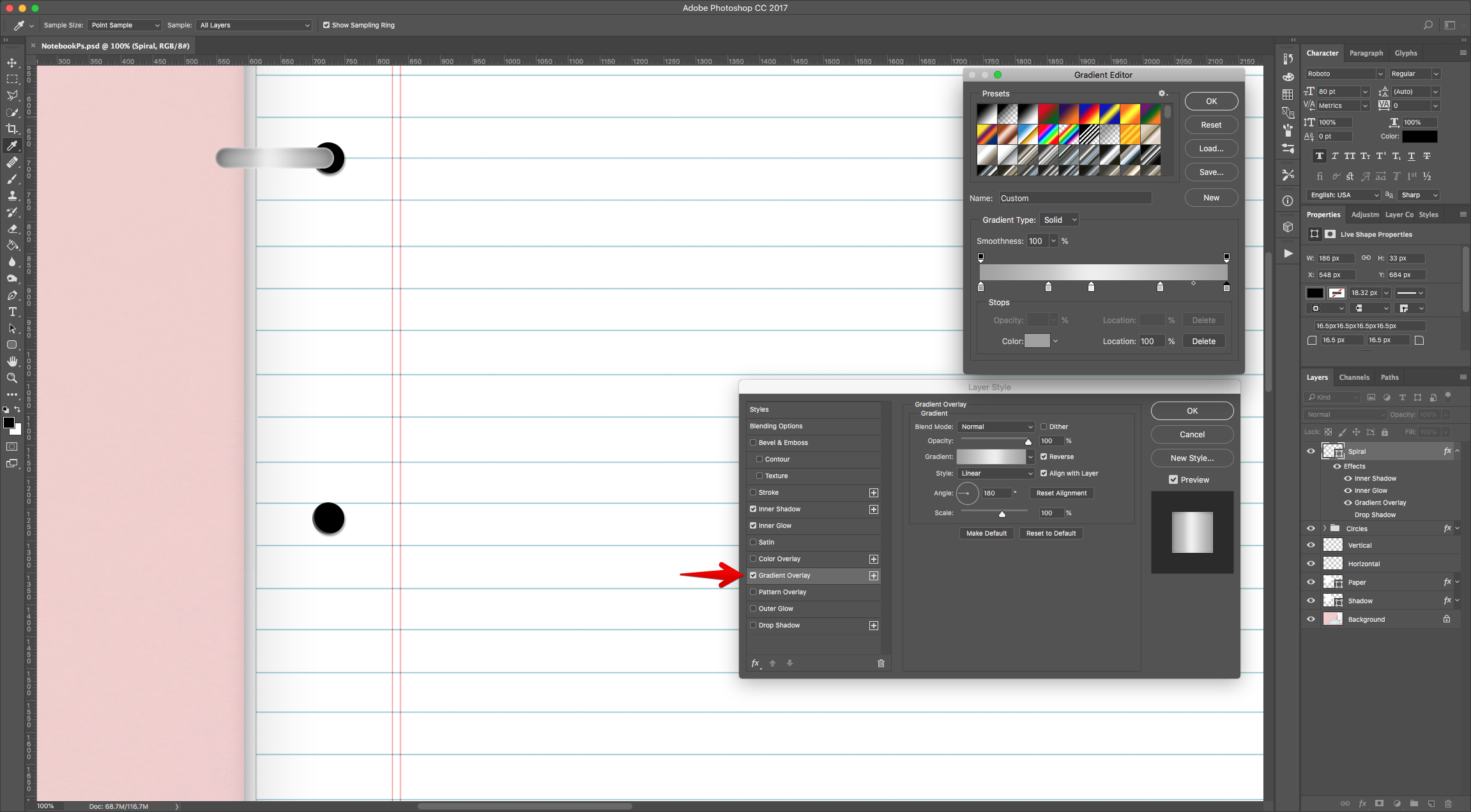
Drop Shadow:

21 - ““Duplicate” the “Spiral” shape a couple of times (Command/Control + J) and distribute the duplicates in the center and bottom of the “Margin” area on top of each “Circle”.
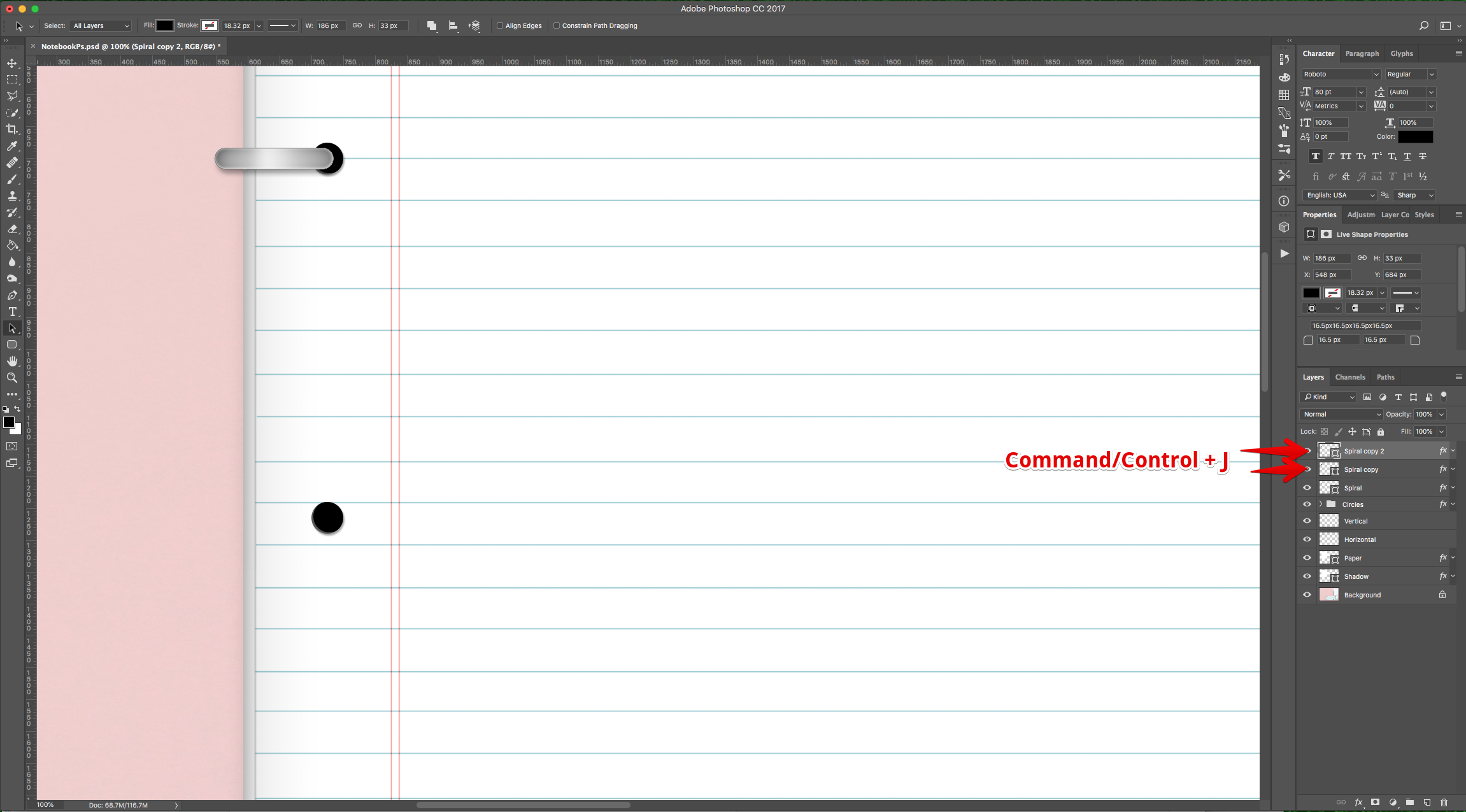
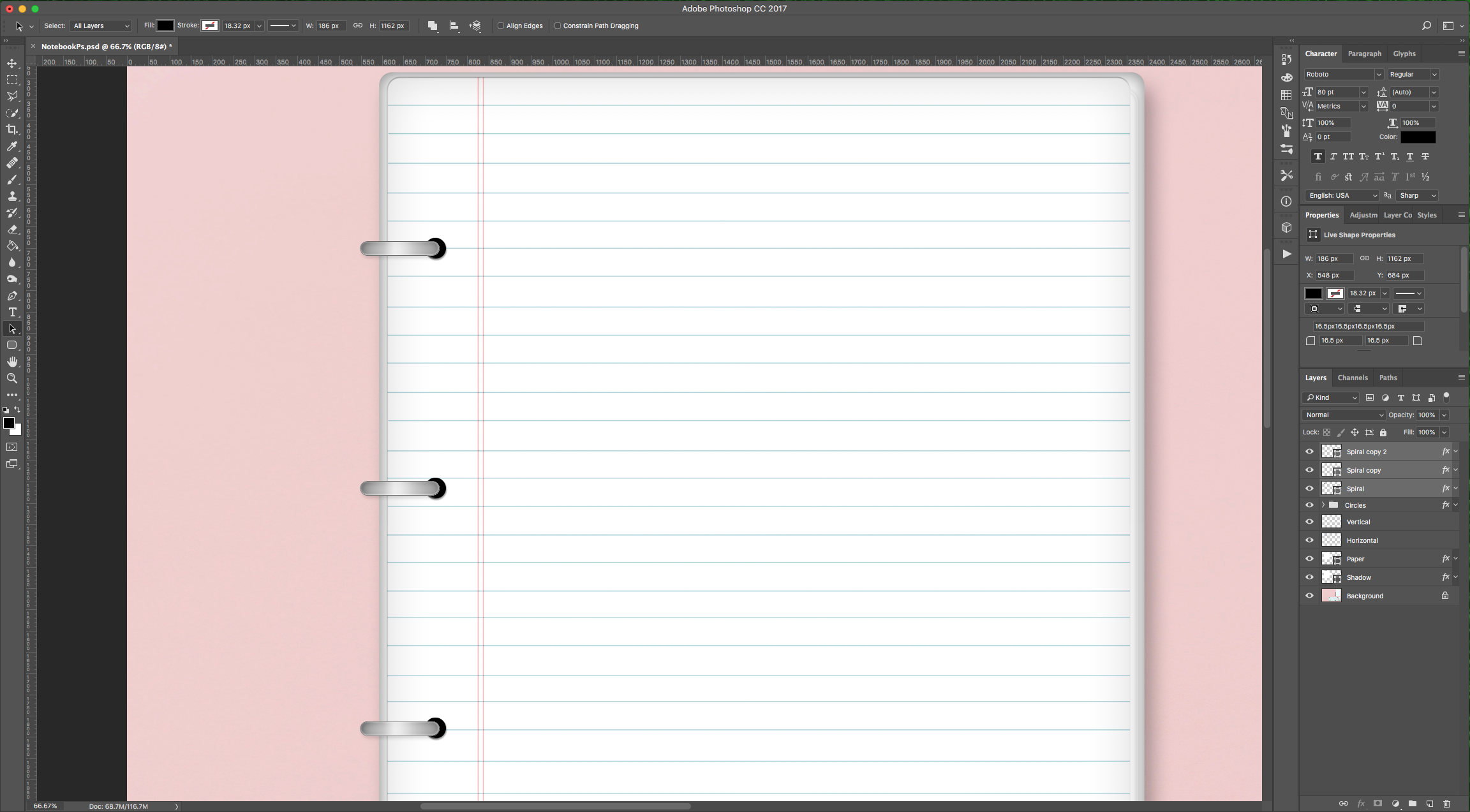
22 - Select all the “Spiral” layers (using the “Shift” key) and “Group” them together by clicking on the small “Folder” icon at the bottom of the “Layers Panel”. Name the Group “Spirals”. Create another “Group” named “Notebook” that includes all the Layers but the “Background” one.
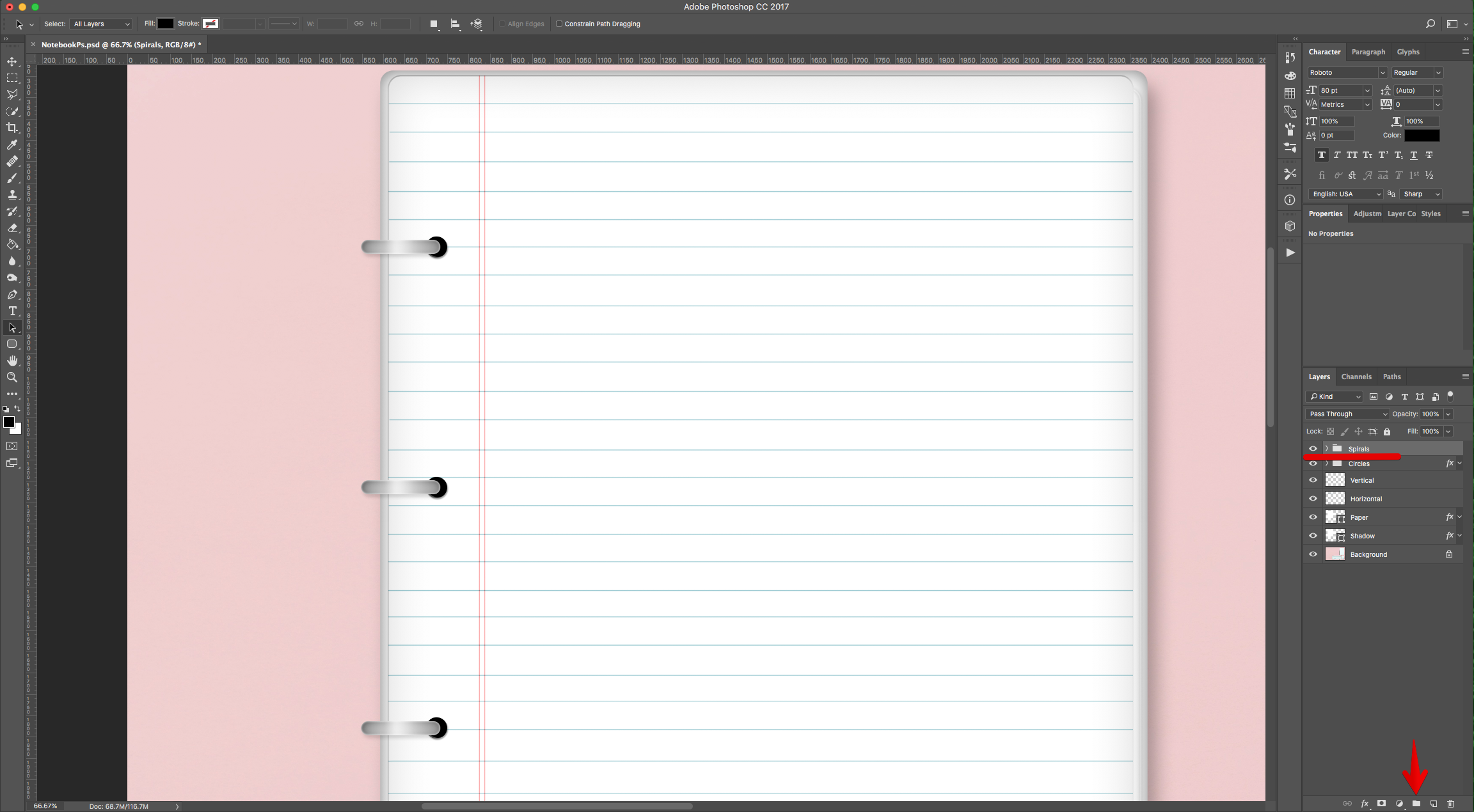
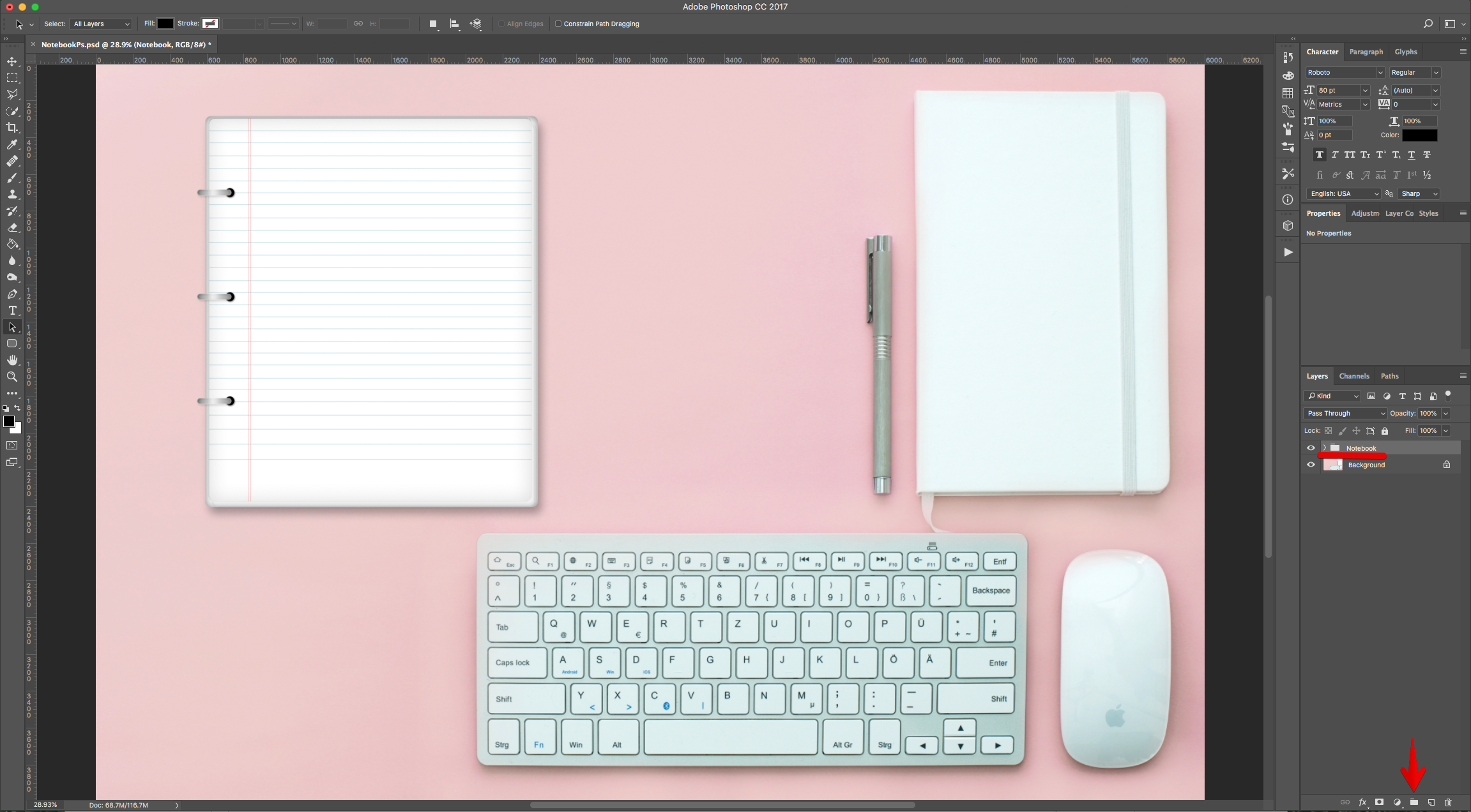
23 - Use “Free Transform” (Command/Control + T) to resize/rotate the “Notebook” if needed. Click on the small Check Mark on the Top Menu or hit “Enter” to “Commit” the changes.

24 - Check out your Artwork!
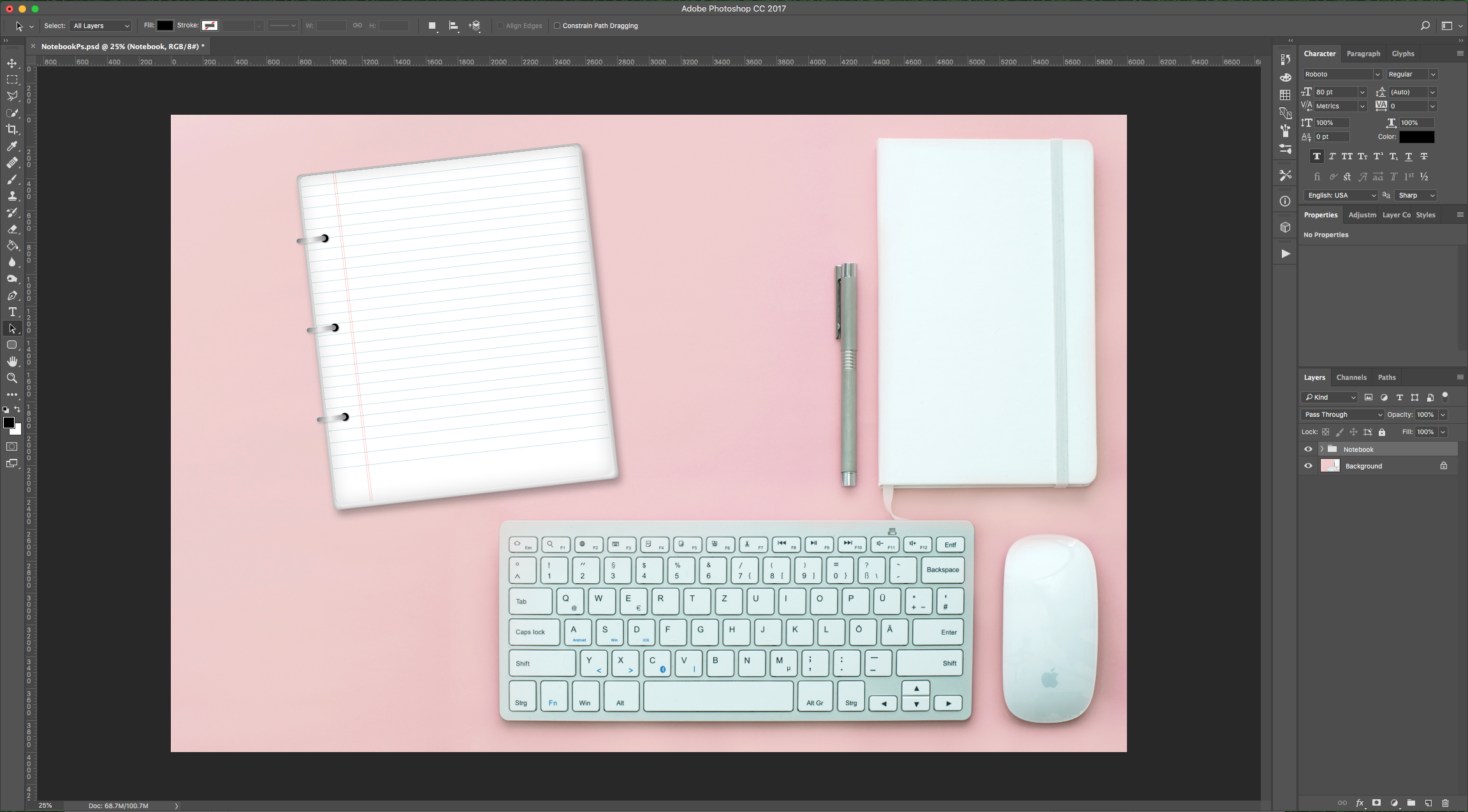
by @lornacane
6 Related Photoshop Tutorials
For this tutorial we are using a canvas or paper background and Titin Script from Font Bundles.1 – Create a new “Gradient Layer” under your “Texture” layer. Use a “Transparent to Fill Color” gradient with #d3d1d1 and #918f8f as colors, the Style as Radial and a 250% Scale. Hit ...
For this tutorial you may want to get a Color Palette as reference.1 - In Photoshop create a “New Document”, make it 15 Centimeters in “Width” and “Height” @300 Pixels/Inch and with a “Transparent” Background.2 - Go to Filter > Render > Clouds...3 - Then, go to Adjustments > Threshold… and ...
For this tutorial, we are using “Bukhari Script” from Fontbundles.net (https://fontbundles.net/mikrojihad/33277-bukhari-script), some cake textures (there are some web pages that have free images that you can useas textures) and a plate and table background images.We are going to divide this tutorial in two sections. ...
Welcome to the Photoshop Short Cuts and Hot Keys tutorial. Here we display a handy table on how you can cut down time on your design work with these easy to use short cuts..table-box br {display:none} .table-box table {margin-top:20px}TOOLS SHORTCUTSWINDOWSMACMove ToolVVRectangular Marquee ToolMMElliptical Marquee ToolMMLasso ToolLLPolygonal ...
For this Tutorial, we are going to an image of “Grass” for the “Background, and a light-colored “Brick” Pattern.1 - In Photoshop, open the file you chose as “Background”.2 - Open the “Brick” Pattern image too. Open the “Image Size” Window (Command/Control + Alt/Option + I) and make it 1000 x 1000 ...
1- Open up Photoshop And select your image.2-Once your image is in your workspace right click on the background image in the layers palette.3- Select duplicate background and a new box will appear. Name your background copy and click OK4- Go to Filter > Filter Gallery. ( note ...

 All your Font Needs
All your Font Needs
 All your Design Needs
All your Design Needs




